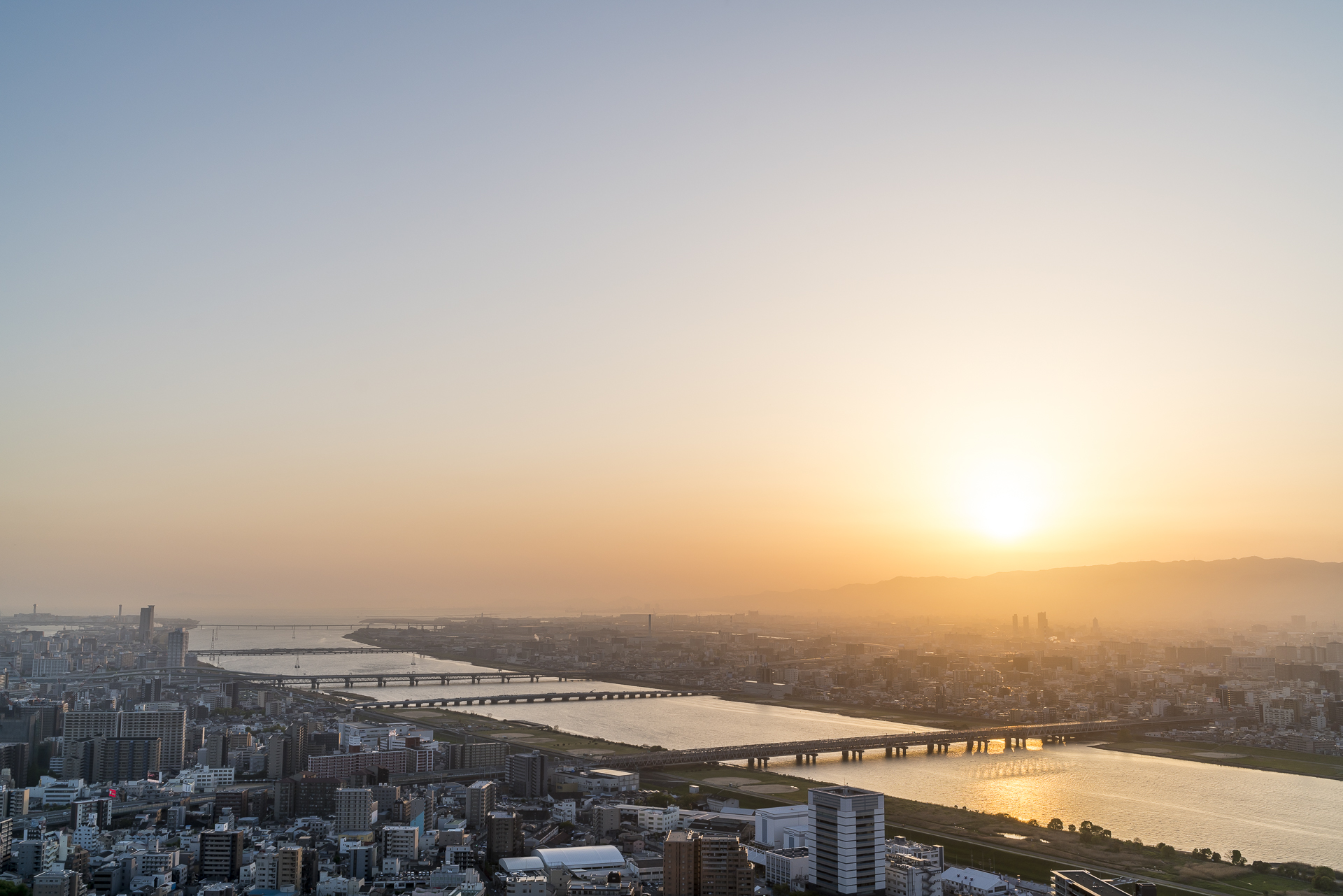
Traveling across Japan for 30 days: route and costs
For 30 days we traveled mostly by train through a multifaceted Japan. Your feedback has shown – there is a lot of interest in Japan! And so, in this blog post, I take on the challenge of reproducing the details of our trip to Japan in the most compact form possible.
In the following, I describe the individual stage stops of our trip to Japan. For some destinations, I have also written more detailed blog posts, each of which is linked. At the end of each stage of the journey you will find information about the means of transport, the accommodation and my respective highlight. Finally, here are the most important facts, our breakdown of travel costs and a route overview in map form.
Before your trip to Japan: route planning and travel preparation
What is the best way to plan a trip to Japan and what should I consider in advance? For inspiration for our route planning, we looked at various itineraries of tour operators on the Internet. When I deal with a destination for the first time, it gives me a good overview to filter out the “must see” spots. At the same time, we looked at the possible means of transport. Due to the excellent train network, it was clear to us that we would spend most of our journey by public transport. Only for the island of Yakushima was a rental car up for discussion.
It is important to know that if you want to travel to Japan by car as a Swiss citizen, you need a Japanese translation of your driver’s license. For us, this detail was only relevant for the second-to-last stage stop, Yakushima. Another important detail is that the validity period for the Japan Rail Pass voucher is three months. Since we started our trip four months before arriving in Japan, we were not able to get the voucher in Switzerland. Alternatively, you can buy the Japan Rail Pass directly in Japan and pay a surcharge of around 10% or purchase the Japan Rail Pass from an authorized travel agency abroad. We obtained the vouchers from H.I.S Tours International Inc. in Los Angeles. I inquired in advance by e-mail about the possibility of buying vouchers directly at the LA office, as we were only on site for three days. This worked wonderfully and saved us the extra charge that we would have had to shell out when buying in Japan.
Preparing for the trip also includes researching and booking accommodation. We toured Japan during the cherry blossom season in April. This is high season and some accommodations are fully booked months in advance. If you value a selected selection of accommodation and don’t want to pay horrendous prices, you would do well to book early. When I made our bookings in the course of October / November (i.e. a good four to five months before the trip to Japan), some traditional inns (ryokans) were already fully booked.
Our Japan Trip – Route Overview
Day 1 to 6: Konnichiwa Japan
For us, this was the first trip to Japan. So it is obvious that we plan enough time for the capital Tokyo as a prelude. I recommend setting aside at least four full days for Tokyo. We had six days at our disposal and we originally had the idea to spend four days in Tokyo and then go on two day trips. In the end, we use five days for sightseeing in Tokyo and take a day trip to Kamakura. A detailed travel description with many sightseeing tips for our six days in Tokyo can be found here: Tokyo Travel Guide
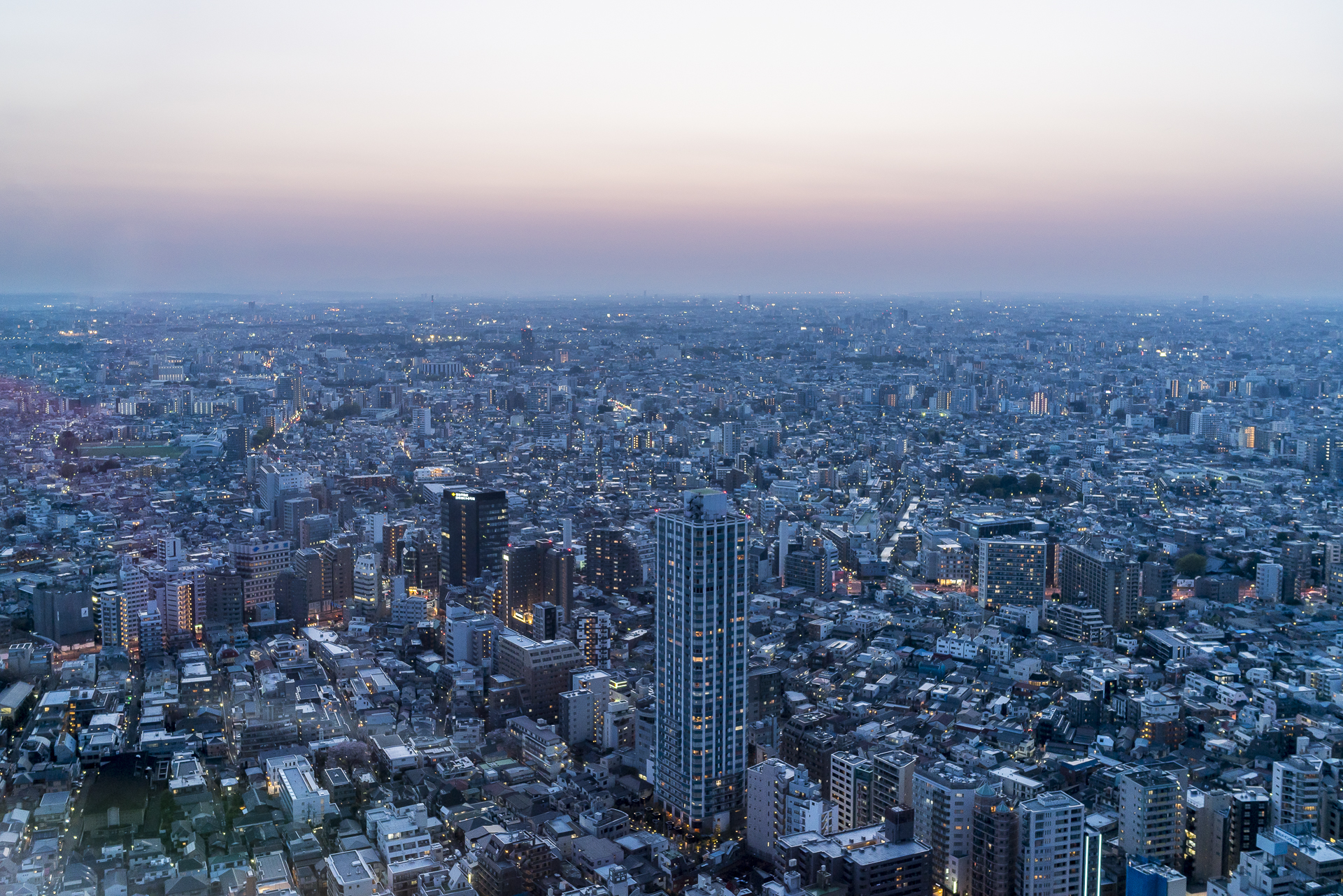
Getting Around With: Metro and Japan Rail
Overnight: AirBnB
Highlight: View from the Metropolitan
Day 7 and 8: Fuji-san and cherry blossoms in Kawaguchiko
Not far from Tokyo is Japan’s mountain icon Fuji-san. If you want to catch a glimpse of the imposing volcano in any case, it is best to take a day trip from Tokyo to Hakone or Kawaguchiko in good weather. We want to combine the detour with a traditional onsen experience at the same time, so we booked two (expensive) nights in a hotel right on Lake Kawaguchi. Depending on the time of year, there are direct services from Shinjuku to Kawaguchiko or those with a connection in Otsuki. The Otsuki-Kawaguchiko line is operated by a private railway and is not included in the Japan Rail Pass.
Right after our arrival in the late afternoon, we make our way to Arakurayama Sengen Park. There, the well-known postcard view of Mt. Fuji awaits us. Luckily, we don’t postpone the trip to the next day. In the evening light, we observe how a cloud front arrives, which does not want to disappear the next day. So we start the second day in Kawaguchiko calmly, enjoy our private onsen and walk along the lake.
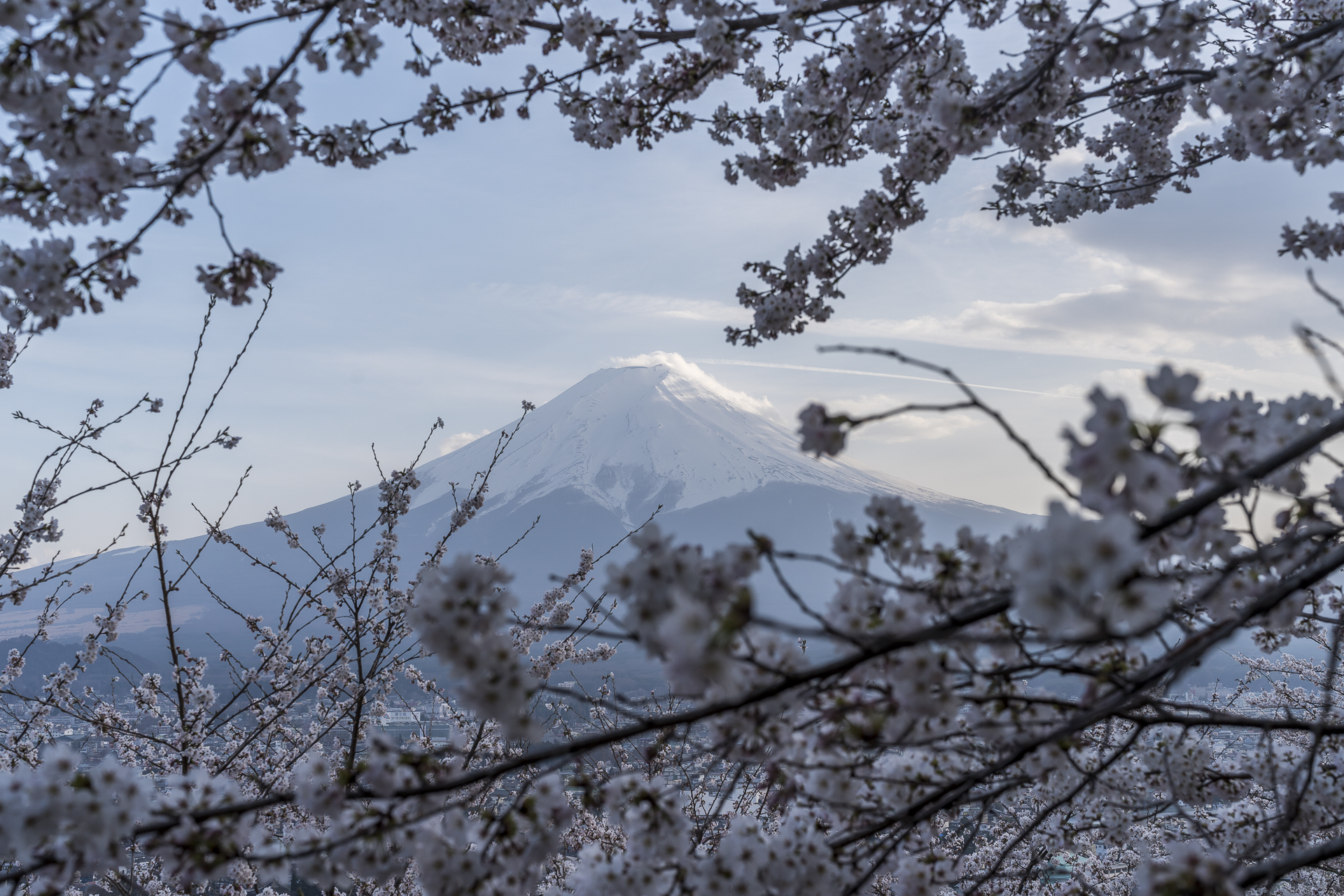
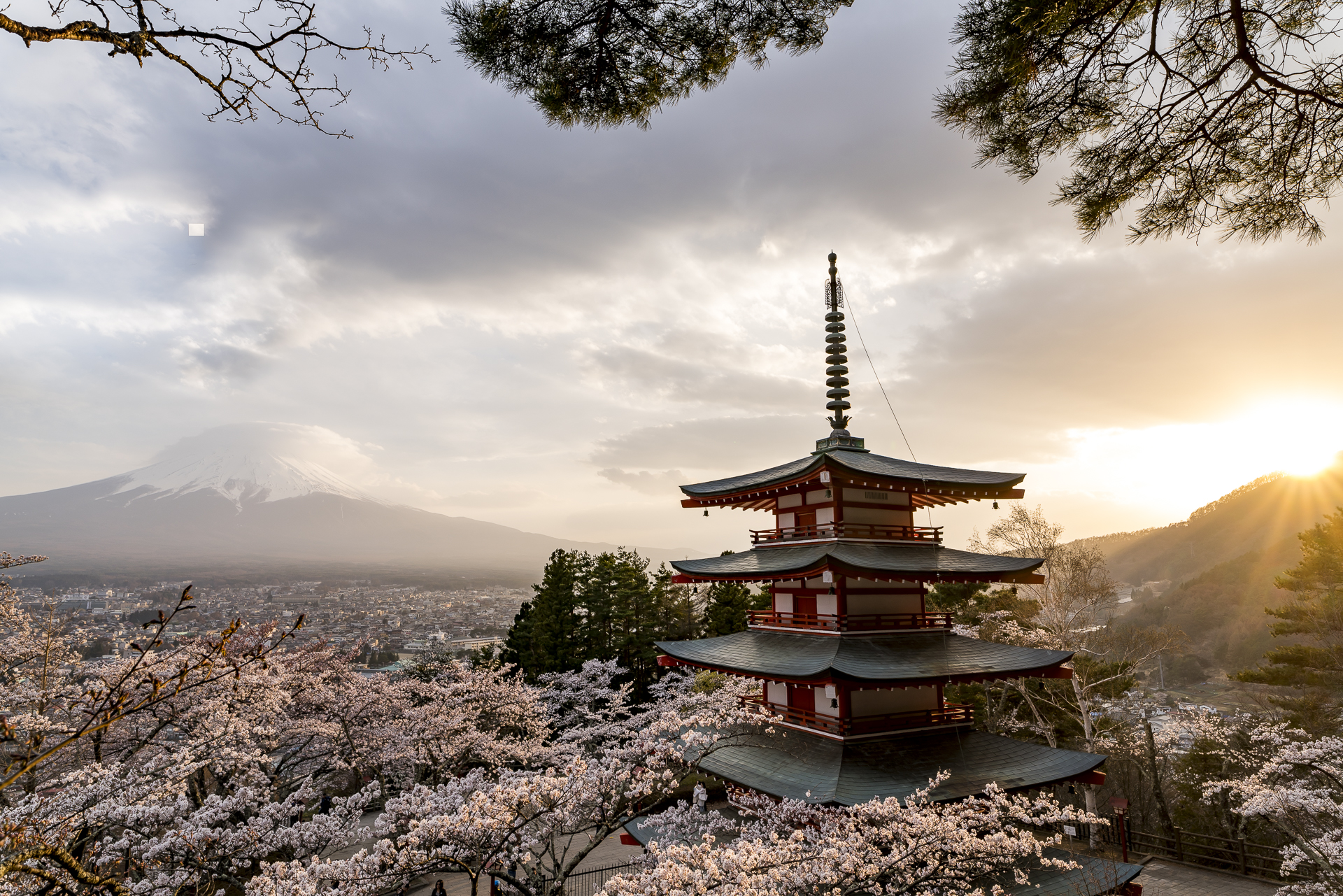
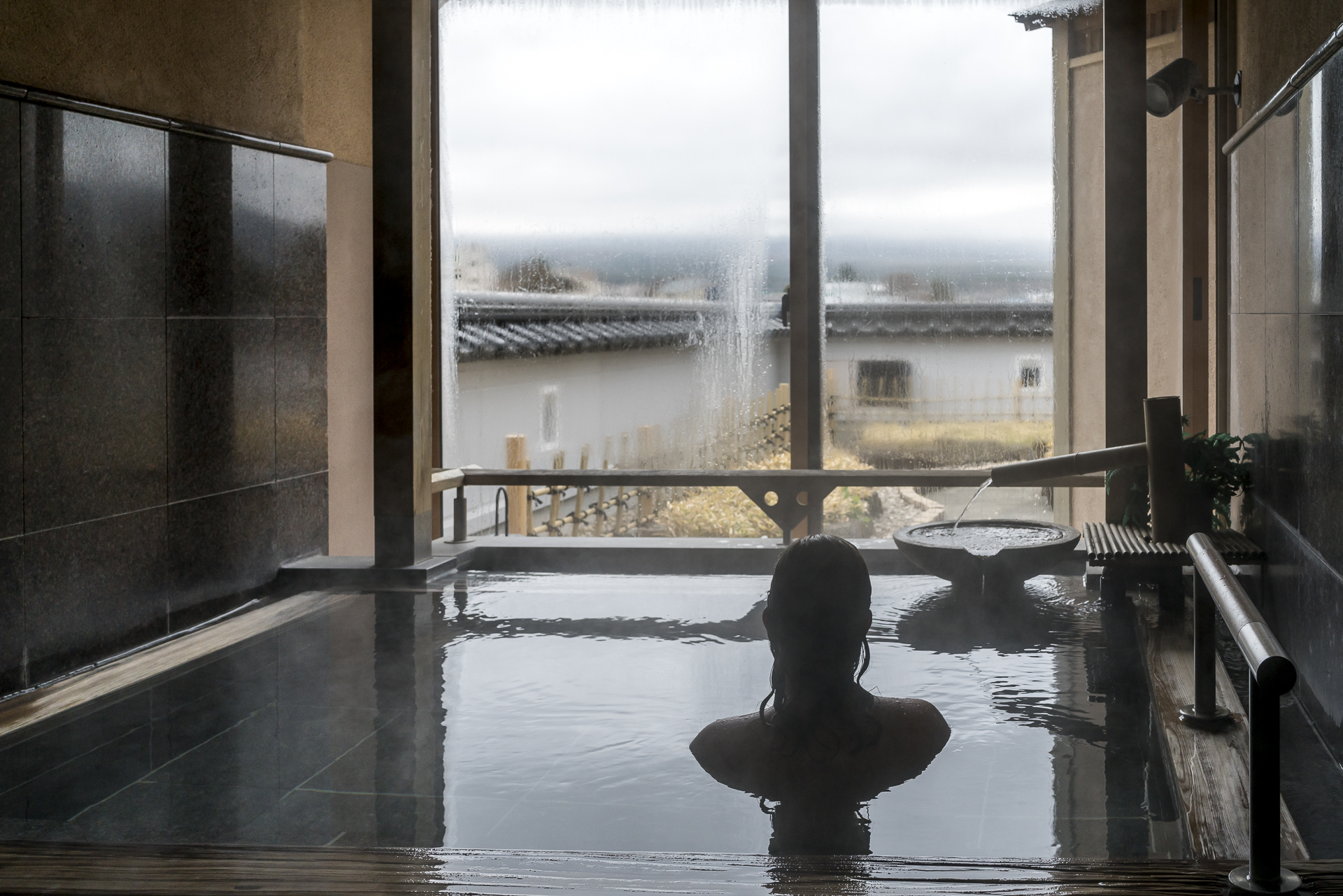
Travelling with: Regional train
Overnight: Fuji Kawaguchiko Onsen Konansou
Sightseeing Highlight: A view of Mount Fuji surrounded by cherry blossoms
Day 9: Stopover in Nagoya
Travelling directly west from Kawaguchiko by public transport is surprisingly cumbersome by Japanese standards. The train connections all go via Tokyo. The solution is bus. For on-site route planning, we use the practical “Route Search” function of the Japan Official Travel App. And so we take the bus at a leisurely pace to Mishima (1.5 hours), where we change to the Shinkansen towards Nagoya.
Theoretically, we could have traveled directly to the Japanese Alps that day. Japan’s fourth-largest city (in terms of population) was a welcome stopover. When booking the hotels, we made sure that they were located in the immediate vicinity of the train station – as was the case in Nagoya. The advantage: minimal baggage lugging. The disadvantage: usually located rather decentrally to the sights. On the 2.5-kilometre walk to Nagoya Castle, we get an impression of the “Toyota City”.
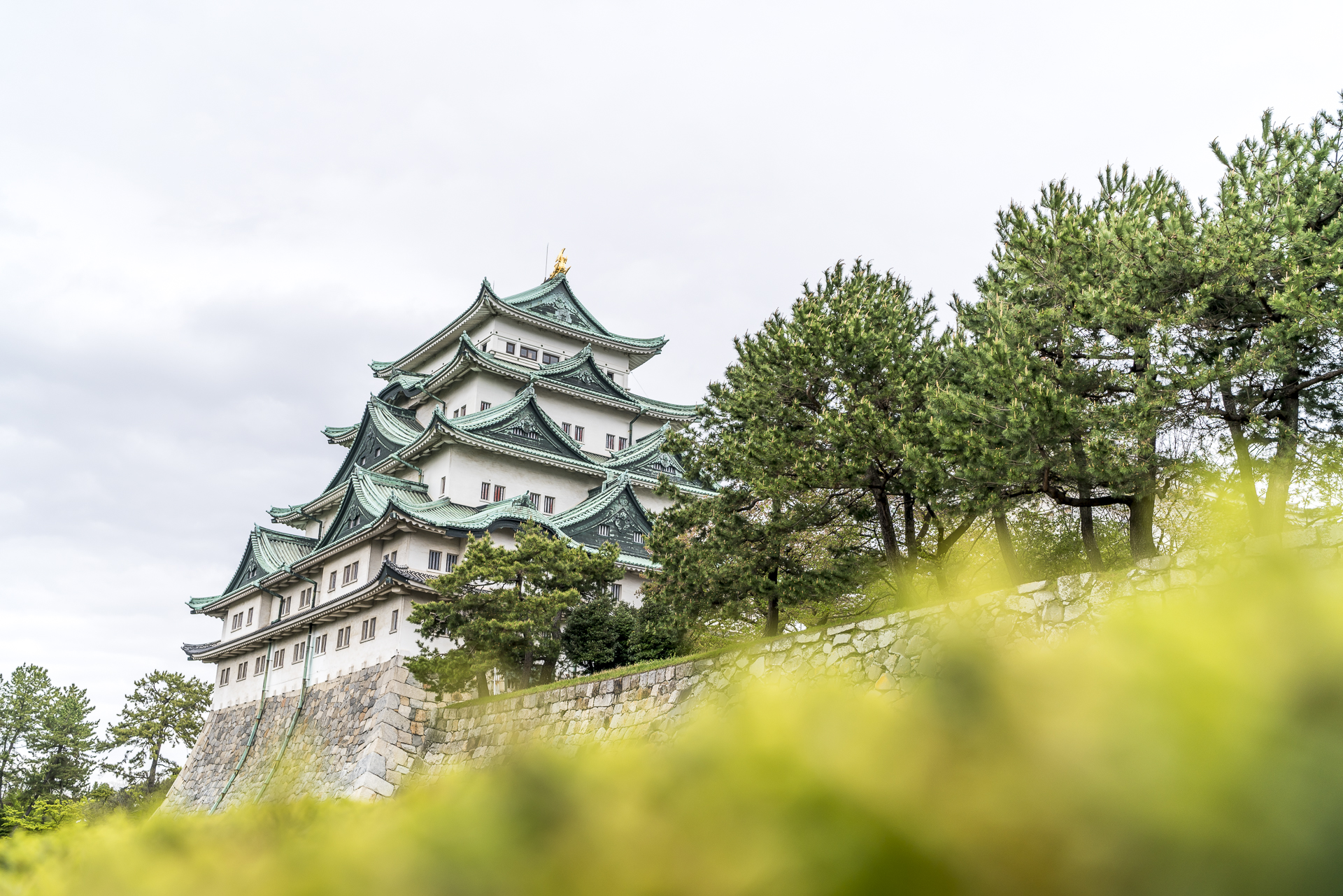
Traveling by: Bus and Shinkansen
Overnight: Daiwa Roynet Hotel Nagoya Shinkansenguchi
Highlight: Nagoya Castle
Day 10 and 11: Side trip to the Japanese Alps
The next morning we have a good coffee in the coffee shop “the Cups Meikei” and then chug to Takayama on the “white view hida” train. The journey on the panoramic train to the Japanese Alps takes just under three hours. On the way we admire the beautiful views of deeply cut valley landscapes. Takayama is known as the “little Kyoto in the Alps” and inspires with an intact old town center consisting of beautiful merchant houses from the Edo period. The charm of Takayama attracts many day-trippers and therefore it is worth staying in the small town. Towards the evening, the alleys slowly empty and shortly after 5:00 p.m. the sidewalks are folded up. On our last day in Hawaii, I bought a Fodor’s Travel Guide to prepare for Japan and found it to be a great restaurant recommendation for Takayama. On the off chance we stop by the historic Kakusho inn and get a private room in the winding building. In a traditional ambience, we are then spoiled with a multi-course, vegetarian kaiseki menu. Fantastic!
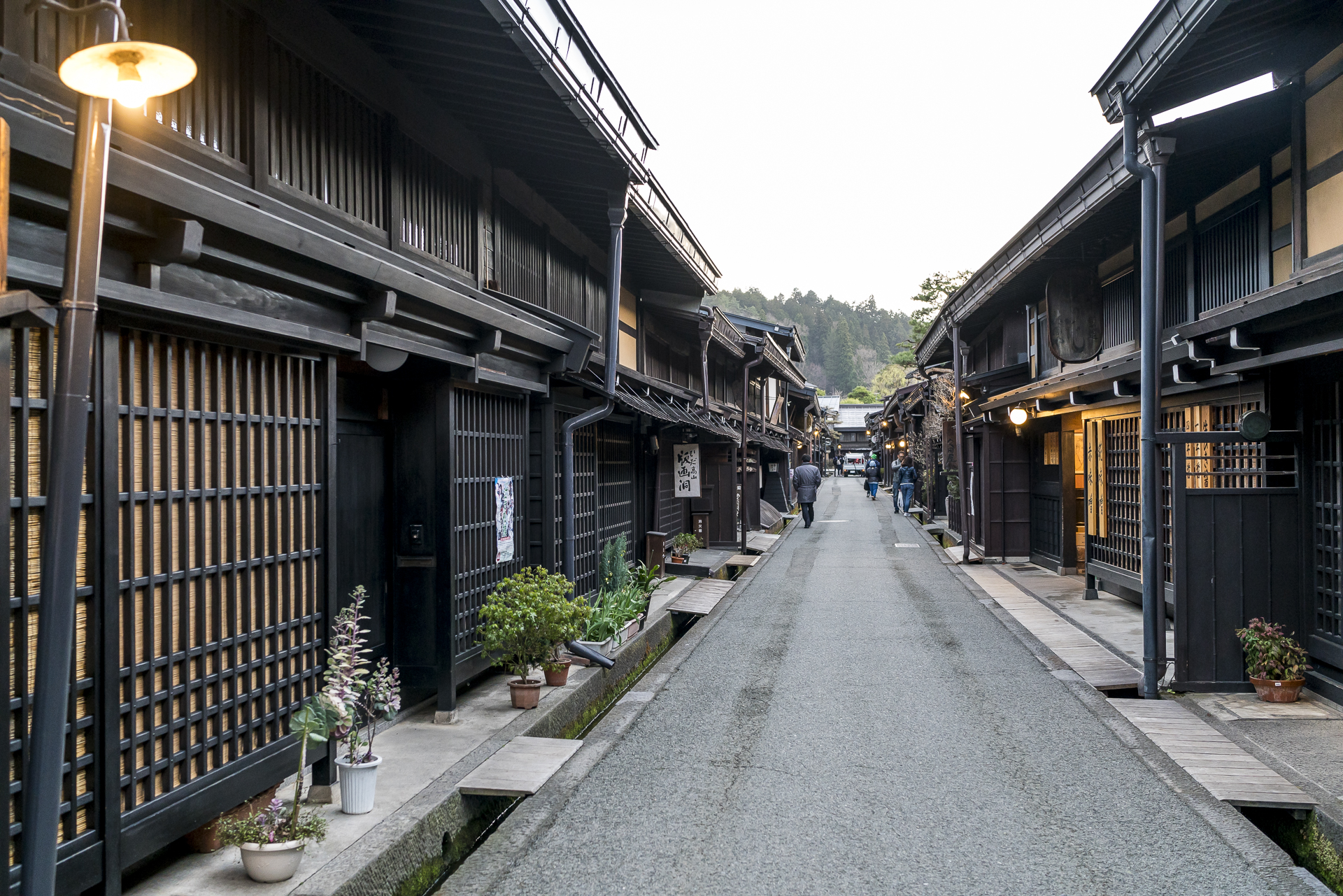
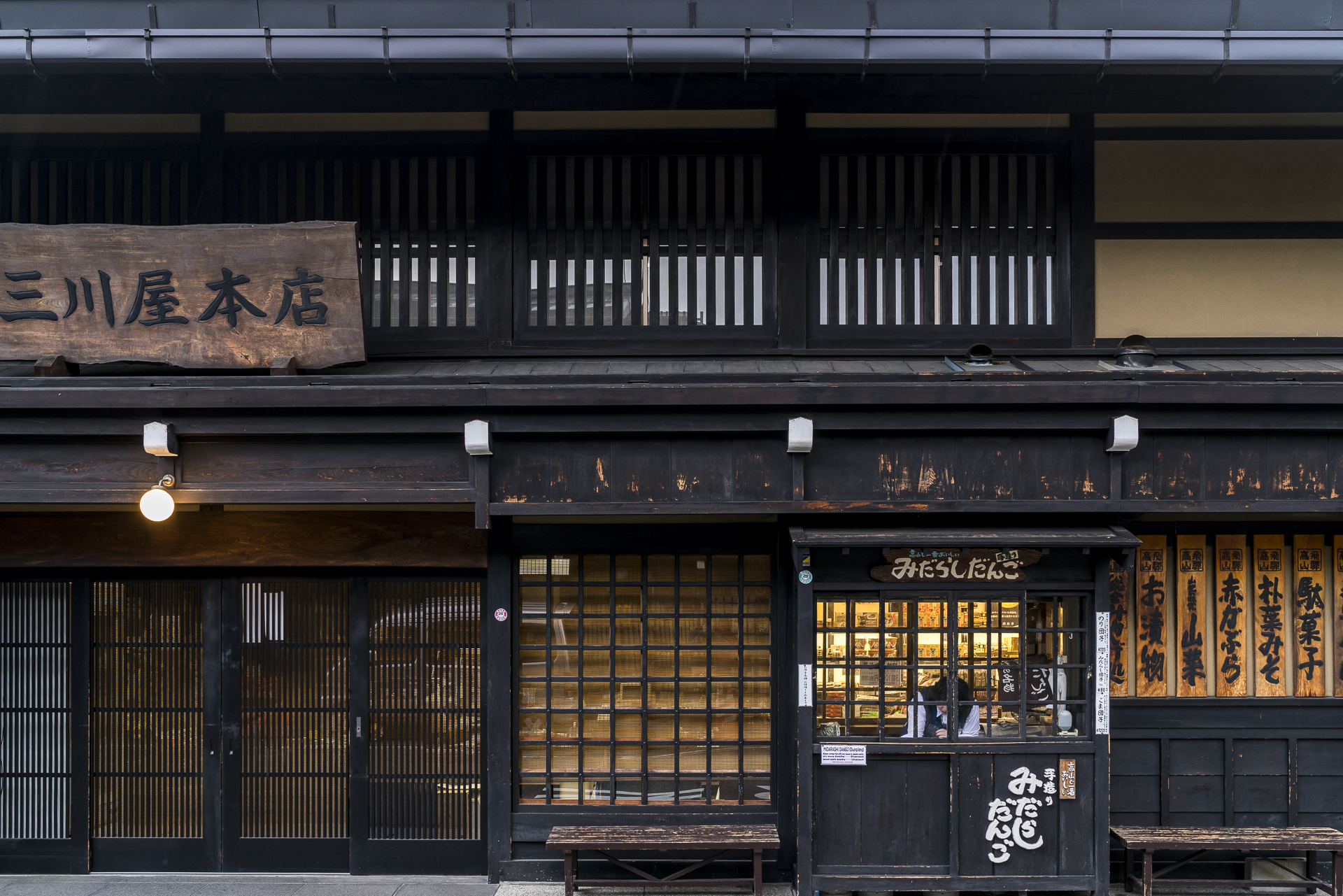
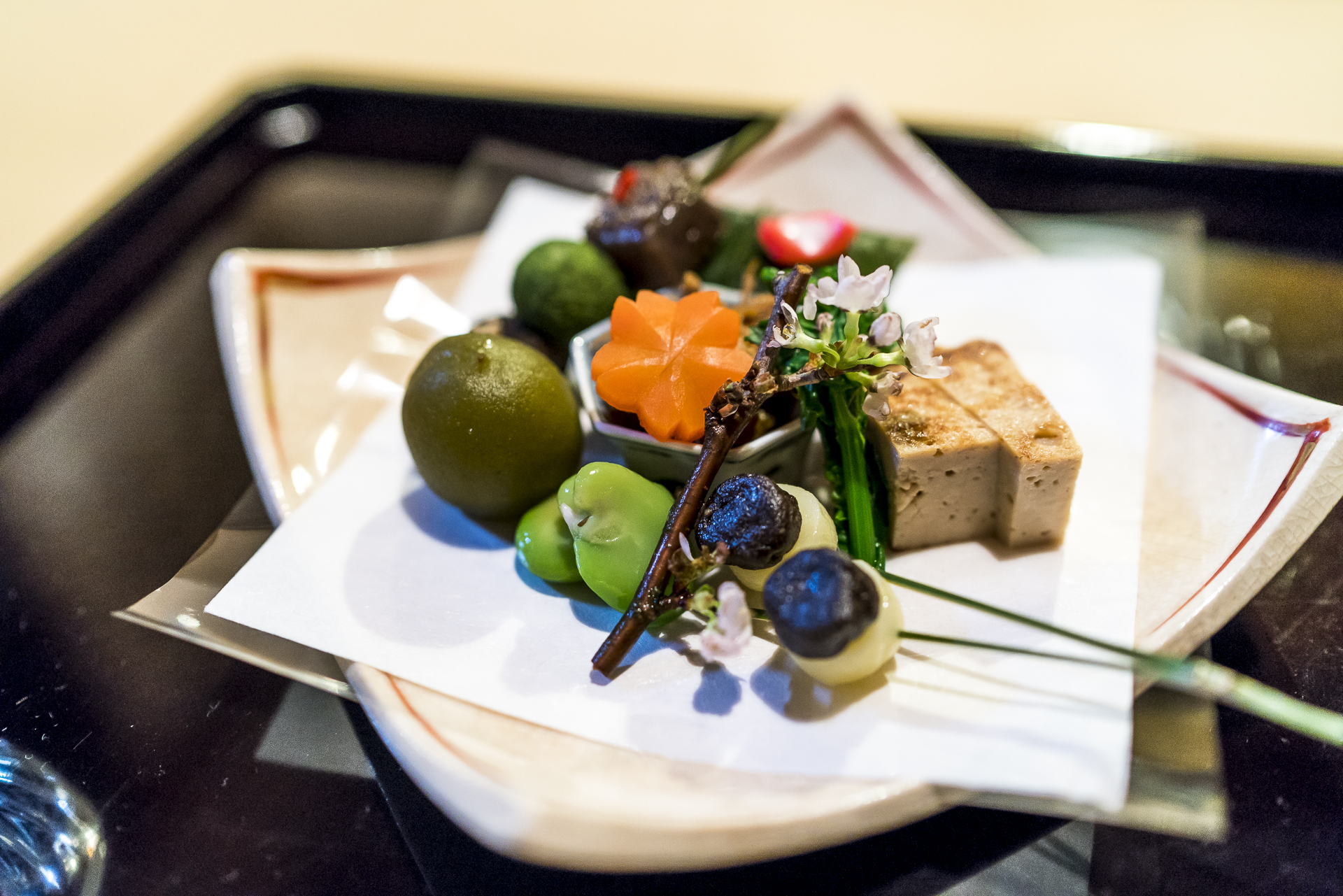
In Japan, too, April does what it wants. This becomes apparent the next day. By bus (route not included in the JR Pass) we take a day trip to the historic villages of Shirakawa-go (UNESCO World Heritage Site). Here in the mountains, not only the typical steep gable roofs of the farmhouses await us, but also fresh powder snow! We first pay a visit to the viewpoint above the village. Afterwards we stop at the Iori inn with dripping wet shoes, where we warm up with a portion of soba noodles. Back in Takayama we pay a visit to Center4 Hamburgers. The small restaurant is run by a young couple and is the total contrast to the Kakusho Inn. The specialty of the burger restaurant is the Hida beef burger – with the finest local meat.
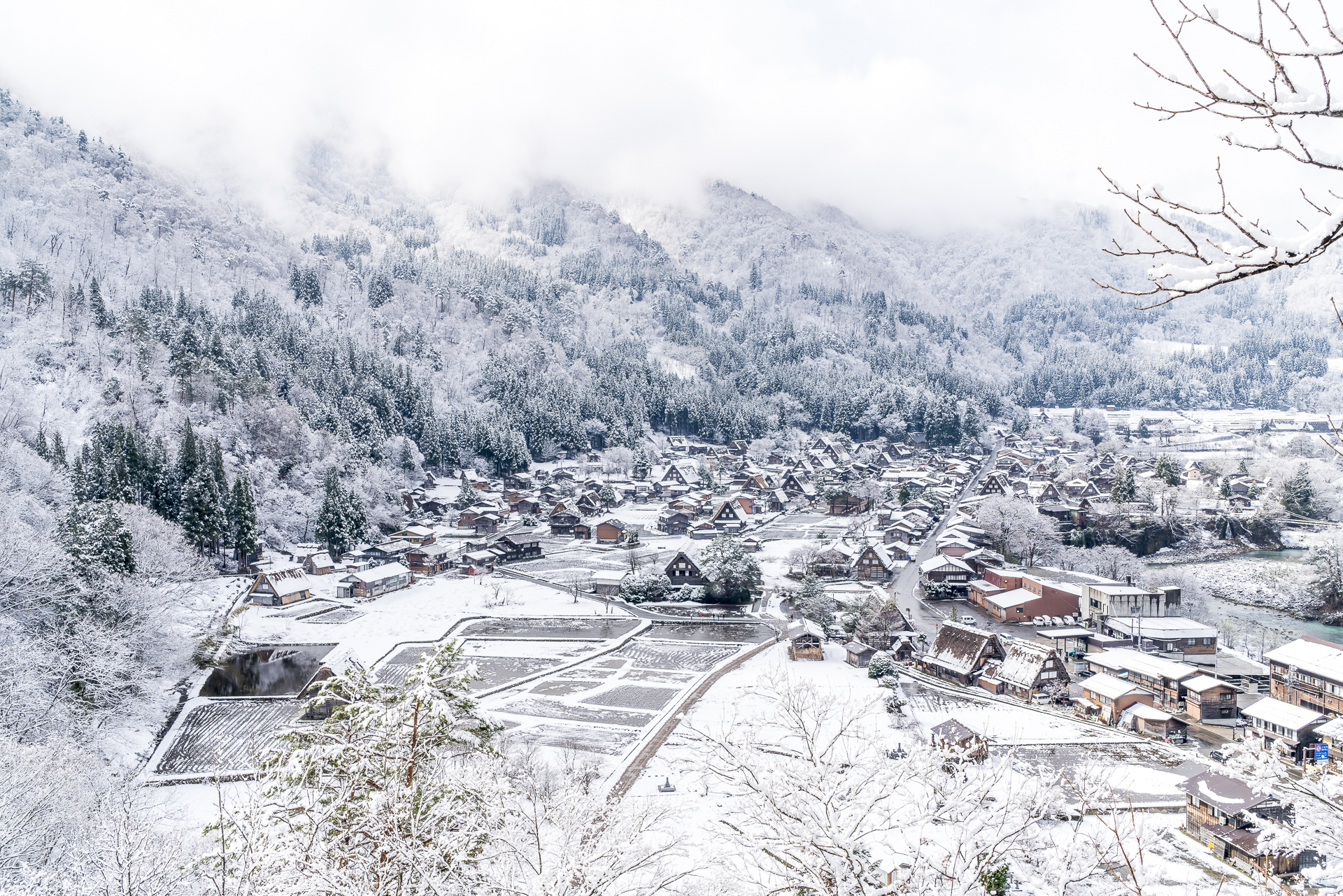
Travelling with: White view Hida Train and Bus
Overnight: K’s House Takayama Oasis
Highlight: Dinner at Kakusho
Day 12 and 13: Insight into local life of Kanazawa
Similar to Takayama, Kanazawa — the capital of Ishikawa Prefecture in the north of the main island of Honshu — is known for its well-preserved neighborhoods from the Edo period. The train ride from Takayama to Kanazawa takes a good two hours with one change in Toyama. A stone’s throw away, so to speak. In Kanazawa we first visit the Kenroku-en Garden. This is one of the three most famous gardens in Japan and attracts a lot of tourists. Interestingly, the rest of Kanazawa is not overly touristy and we also have the old teahouse district almost to ourselves on this day. On the recommendation of Katrin from the travel blog Viel Unterwegs, who visited Kanazawa a few days before us, I booked a walking tour with Creative Kanazawa (3000 yen per person) two days before our arrival. The online form on the website is only available in Japanese, but thanks to Chrome’s built-in translation tool, I was still able to do it. The tours seem to be still an insider tip for foreign guests – so we can enjoy a private tour through the teahouse district with exciting insights into the craft shops and art studios and visit a traditional tea house. At Maki no Oto, we treat ourselves to a short breather during a traditional matcha tea ceremony. The subsequent visit to the historic miso factory Takakikouji fascinates me so much that our guide spontaneously organizes for me to participate in a miso making course for the next day.
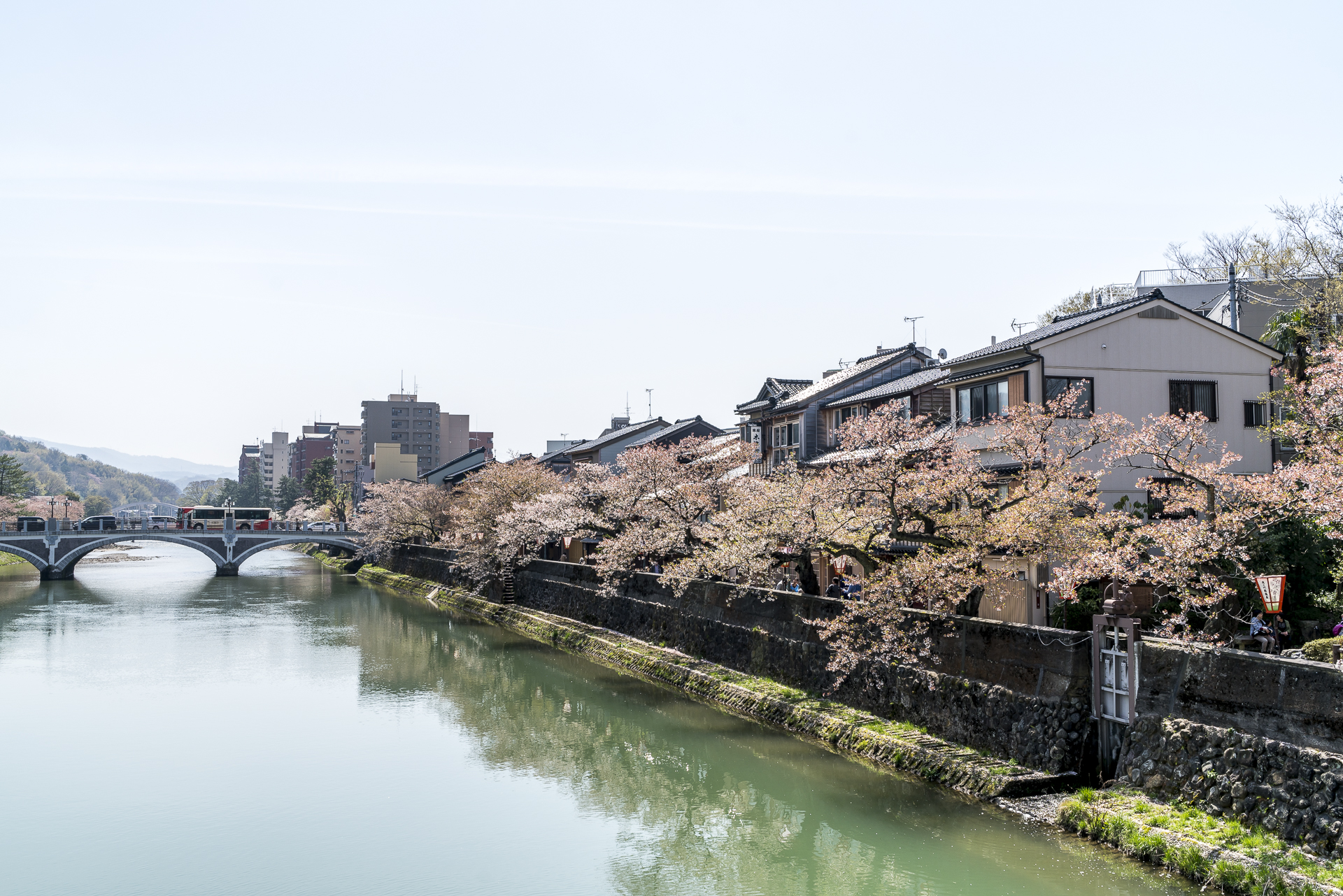
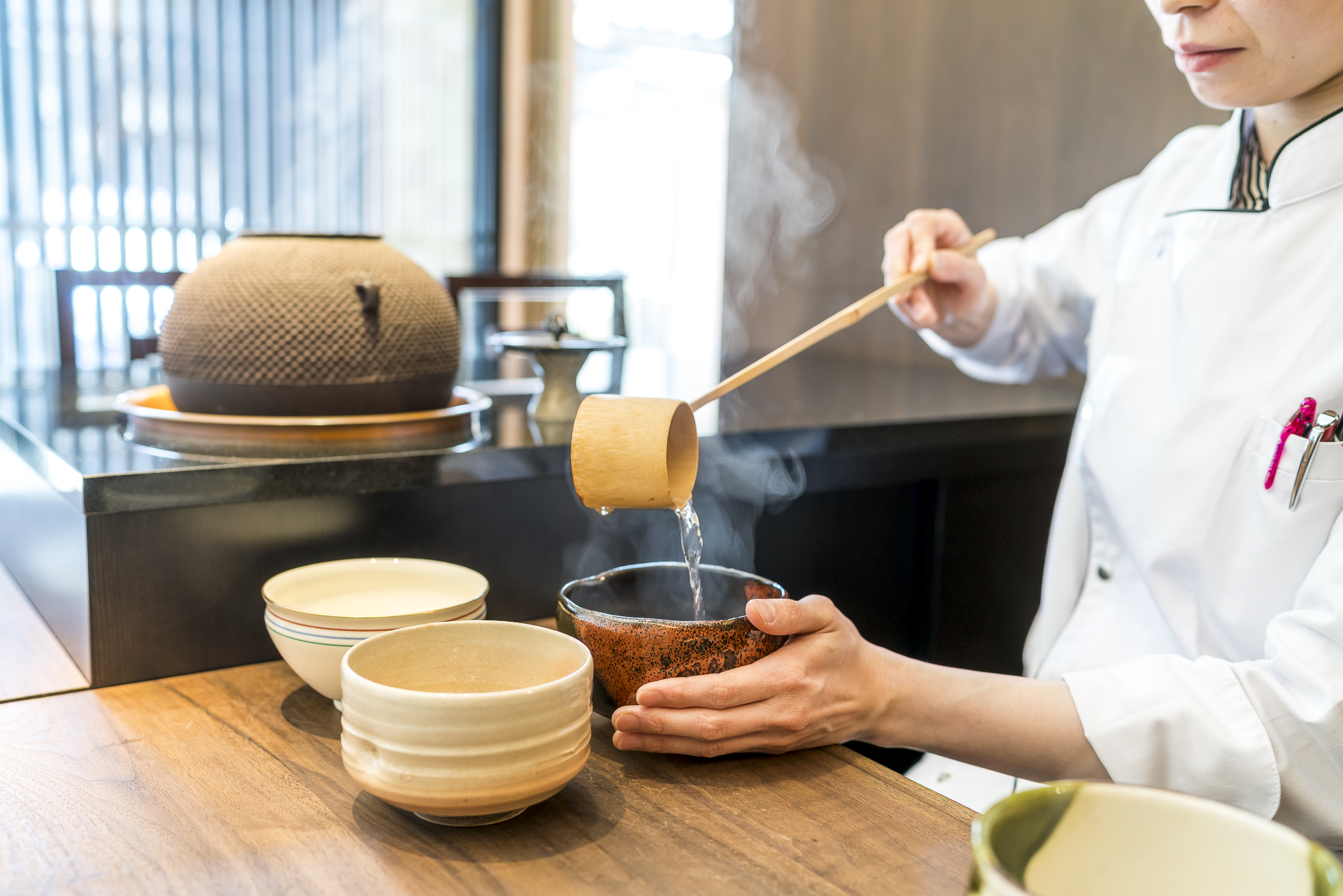
Not only do I like the historical part of Kanazawa, but I also like its modern sides such as the 21st Century of Contemporary Art Museum as well as the outstanding architecture of the D.T. Suzuki Museum. The subsequent dinner at the Fuwari restaurant also makes it onto the top ten list of our culinary experiences in Japan.
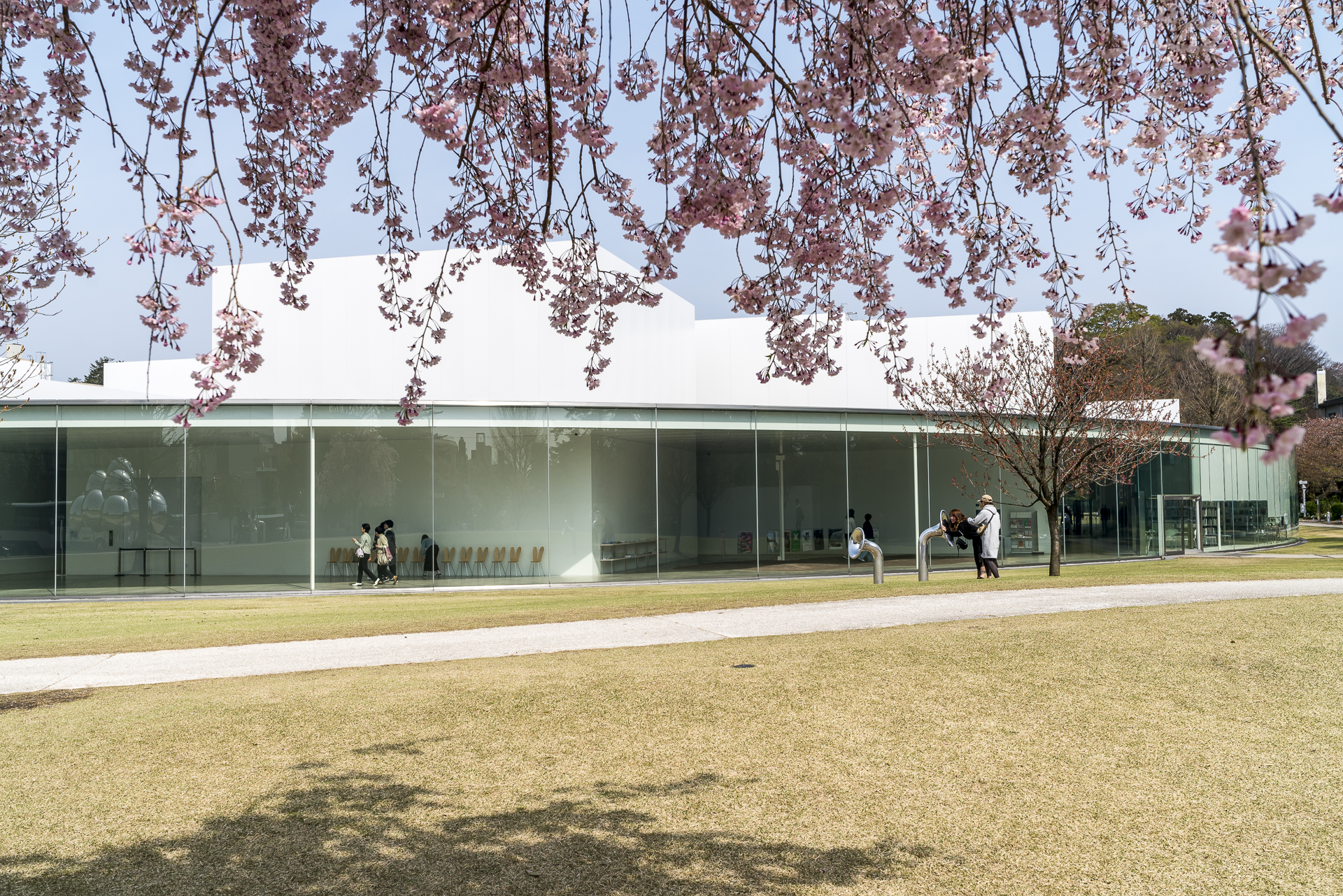

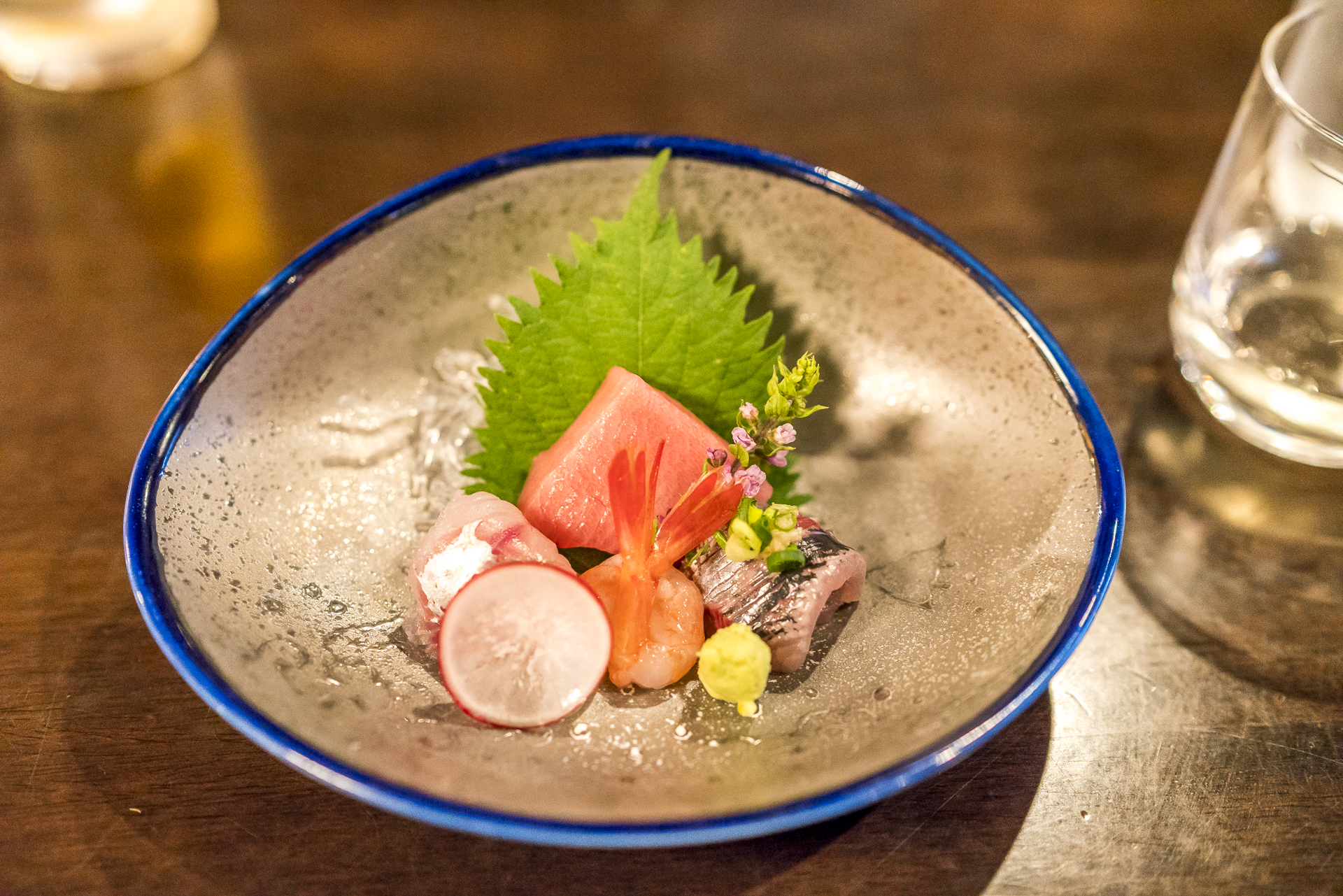
On the day of our onward journey to Hikone, I find myself back in the miso factory Takagikouji early in the morning, surrounded by a group of Japanese ladies. Fortunately, Ryo Takagi – the senior manager of the traditional family business – speaks English and can explain the individual steps of the miso production process to me. The Japanese paste, consisting of soybeans and rice (or grains), is an integral part of Japanese cuisine. Japanese people usually start their day with a bowl of miso soup. At Takagikouji, the ladies produce their annual ration of miso under the guidance of the expert family business. For me, it’s just the production – unfortunately I can’t take the miso (weighing a good 5kg) with me. I had agreed with our guide from Creative Kanazawa the day before that he would pick up the miso later. After all, with this action I contribute to the daily breakfast happiness of another person.
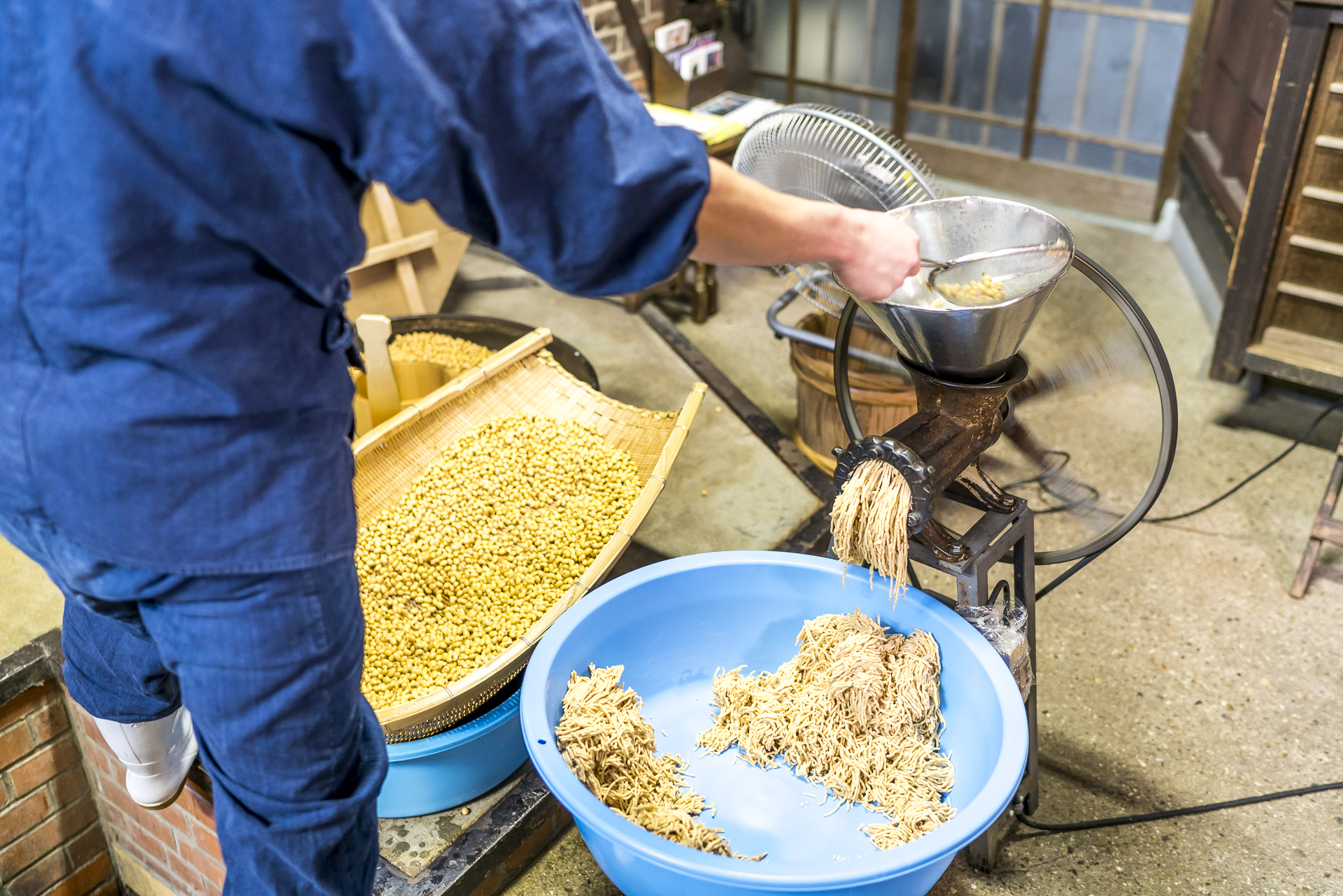
On the road with: White view Hida Train and Shinkansen
Overnight: Hotel Nikko Kanazawa
Highlight: Miso Making Class
Day 14 and 15: Relaxing days in Hikone
After the miso course, we continue directly by train. We reach our next destination with one change (in Maibara) in a good two hours driving time. If I had to optimize our Japan itinerary in hindsight, I would plan one night instead of two for Hikone and set aside a night in Nara. Two nights for Hikone are generous. The highlights of Hikone are the castle as well as the adjacent Genkyu-en Garden, which is enough to visit in half a day. Also worth seeing is the Yume-Kyobashi Castle Road with numerous restaurants. We decide to go to the restaurant Sennari-tei Kyara, which specializes in omi beef (local meat) dishes, and order a shabu shabu.
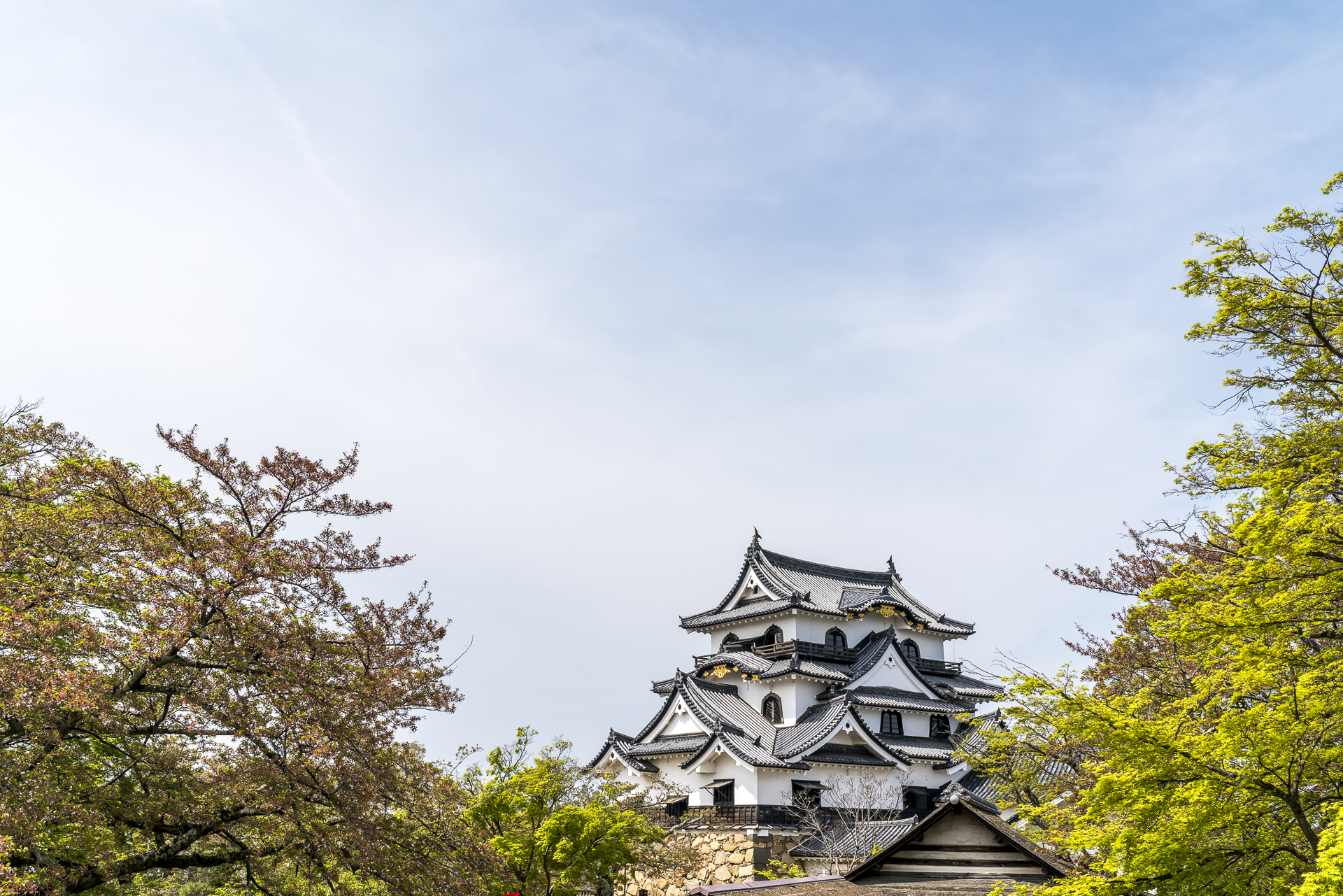
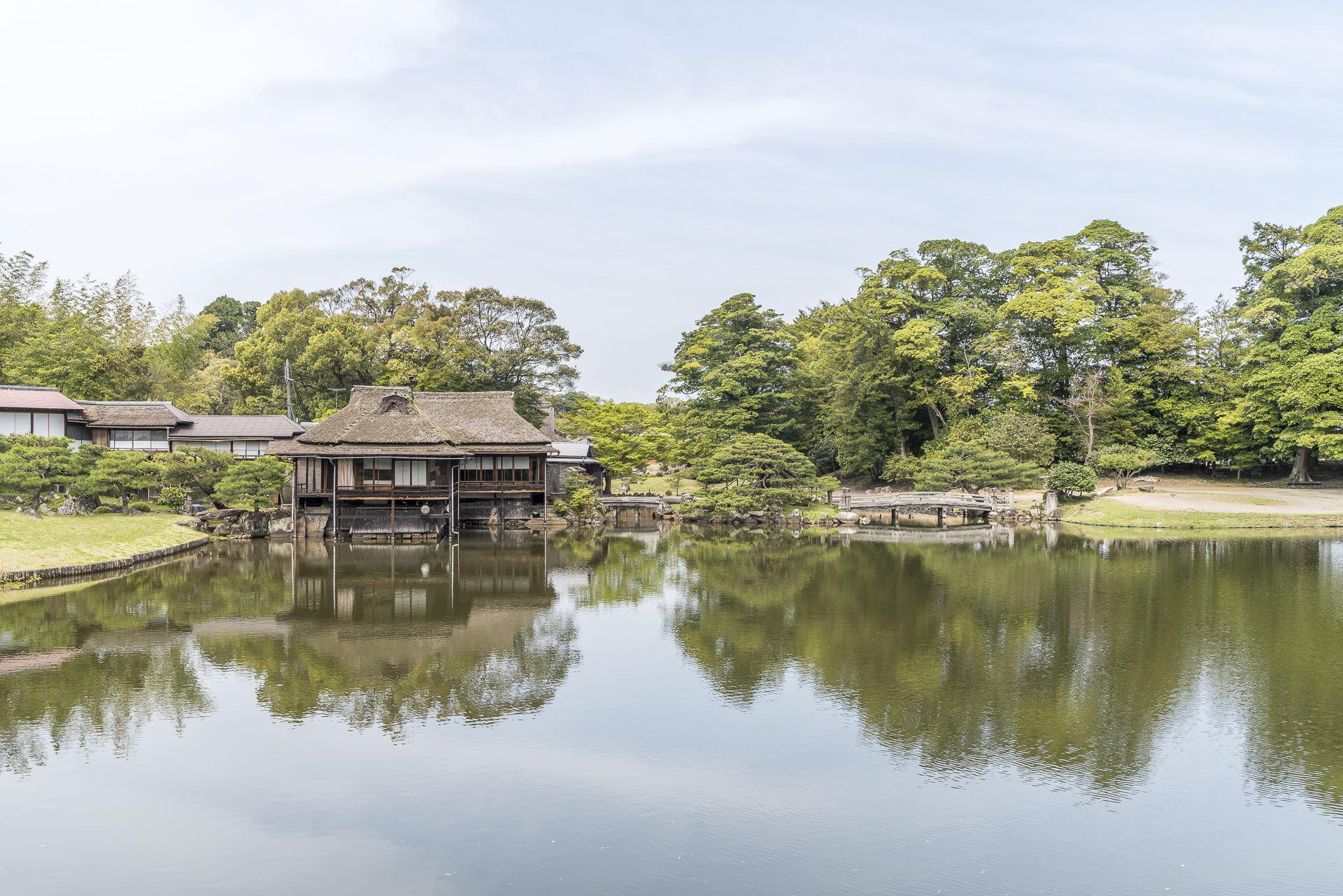
The second day, when it rains heavily, we use to do laundry and various blog work. Such a break from sightseeing is also good for longer trips in between.
On the road with: Shinkansen and JR Tokaido Sanyo Main Line
Overnight: Comfort Hotel Hikone
Highlight: Omi Beef Shabu Shabu at Sennari-tei
Day 16 to 19: Fascinating Kyoto
To get from Hikone to Kyoto, there are two options. The faster variant (about 30 minutes travel time) requires one change in Maibara. We opt for the slower option (about 50 minutes drive), which takes us directly to Kyoto. Kyoto is one of the cultural highlights of a trip to Japan and accordingly it is worth allowing enough time for exploration.
We spent a total of four days in Kyoto. You can read about what we did in detail during these four days in my Kyoto travel guide.
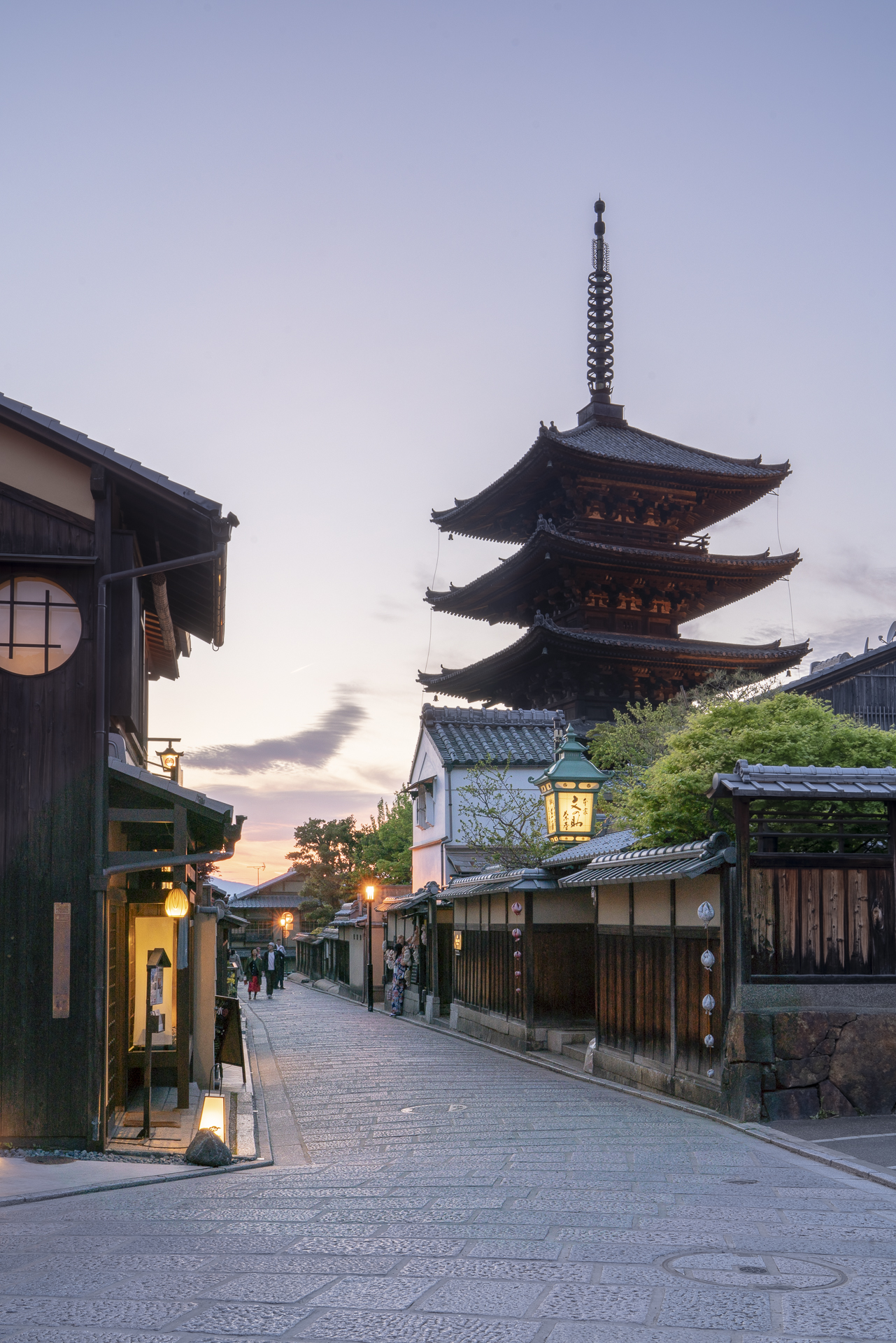
Traveling with: JR Tokaido Sanyo Main Line
Overnight: K’s House Kyoto – Backpackers Hostel
Highlight: Fushimi Inari Shrine Early Morning
Day 20 to 22: Casual Osaka
Due to all the exciting sights, we don’t have the time for a day trip to Nara between Kyoto and Osaka. A detour to Japan’s old imperial city is actually a must. Instead of wasting the time in Hikone as mentioned above, we would have ideally planned an overnight stay in Nara. We don’t think it’s tragic that we “missed” Nara. Such gaps are a good reason for a future trip to Japan.
From Kyoto you can get to Osaka quickly. The journey on the JR Tokaido Sanyo Main Line takes between 30 and 50 minutes, depending on the connection. We have planned three days for Japan’s foodie capital and start our sightseeing program right after arrival with a visit to Osaka Castle. Thanks to its impressive location in the middle of the city centre, there are beautiful panoramic views of the surrounding skyscrapers from the park around the castle. I like Osaka right away – in contrast to Tokyo, everything here is much more relaxed despite the big city feeling and there are tons of great coffee shops. The best cinnamon rolls can be found at Coffee Roughnecks, which opens at 8:00 a.m. (a small sensation in Japan) and is therefore a great breakfast location. The owner was initiated into the art of barista in New Zealand and therefore speaks good English. Our other breakfast favorites include Brooklyn Roasting Company Kitahama and Mill Pour Coffee Shop.
Afterwards we take the metro to the south of the city, where we visit one of the oldest Shinto shrines in Japan – the Sumiyoshi-Taisha Shrine. Just around the corner is the «Azuma House». The compact concrete terraced house is one of the first buildings by Japanese architect Tadao Ando, whose office is also located in Osaka. Tadao Ando fans (I count myself among them) will find some exciting buildings around Osaka such as the Church of Light or the Shiba Ryotaro Memorial Museum. We make a detour to the latter. Unfortunately, photography inside is forbidden, but it is definitely worth a visit for those interested in architecture.
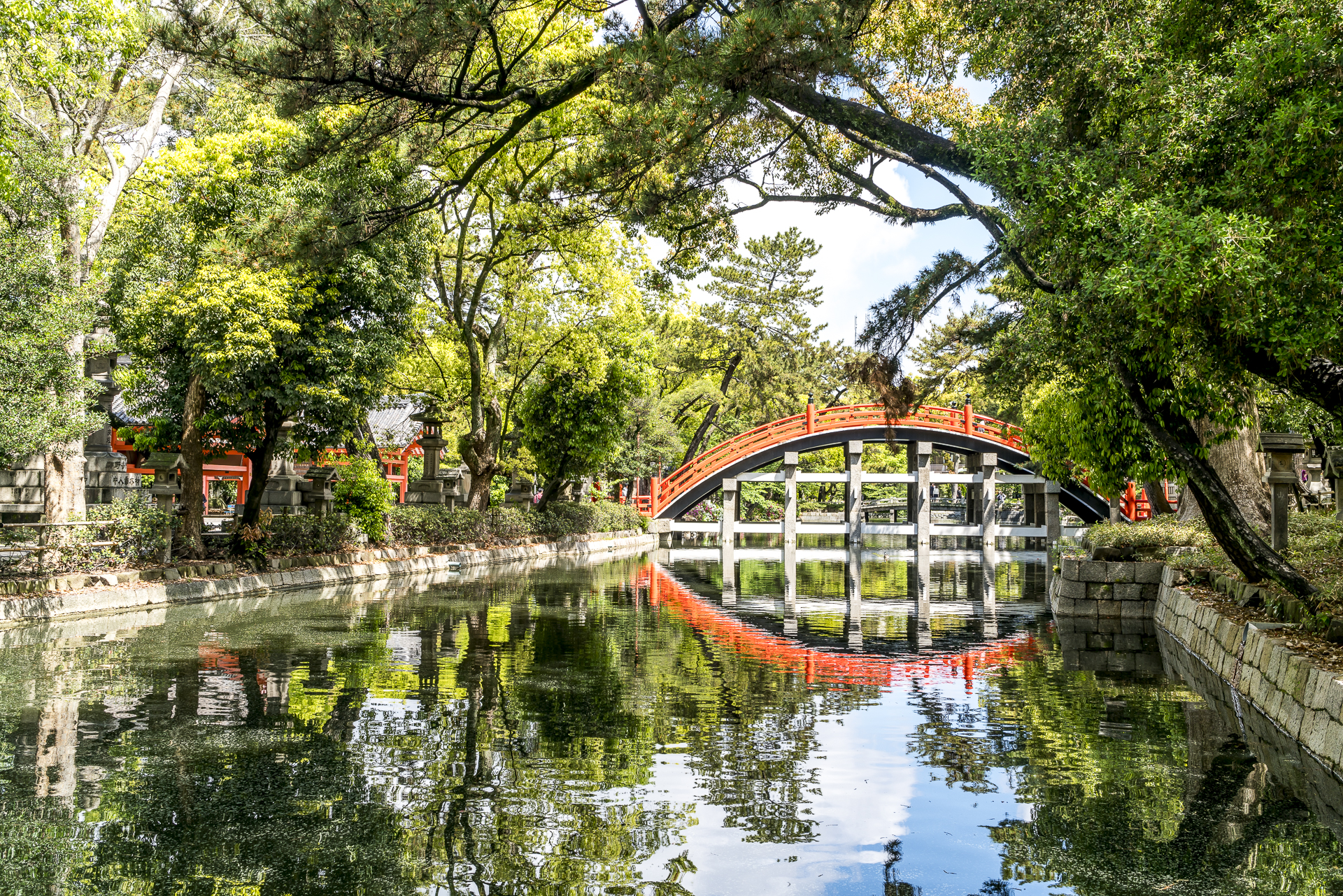
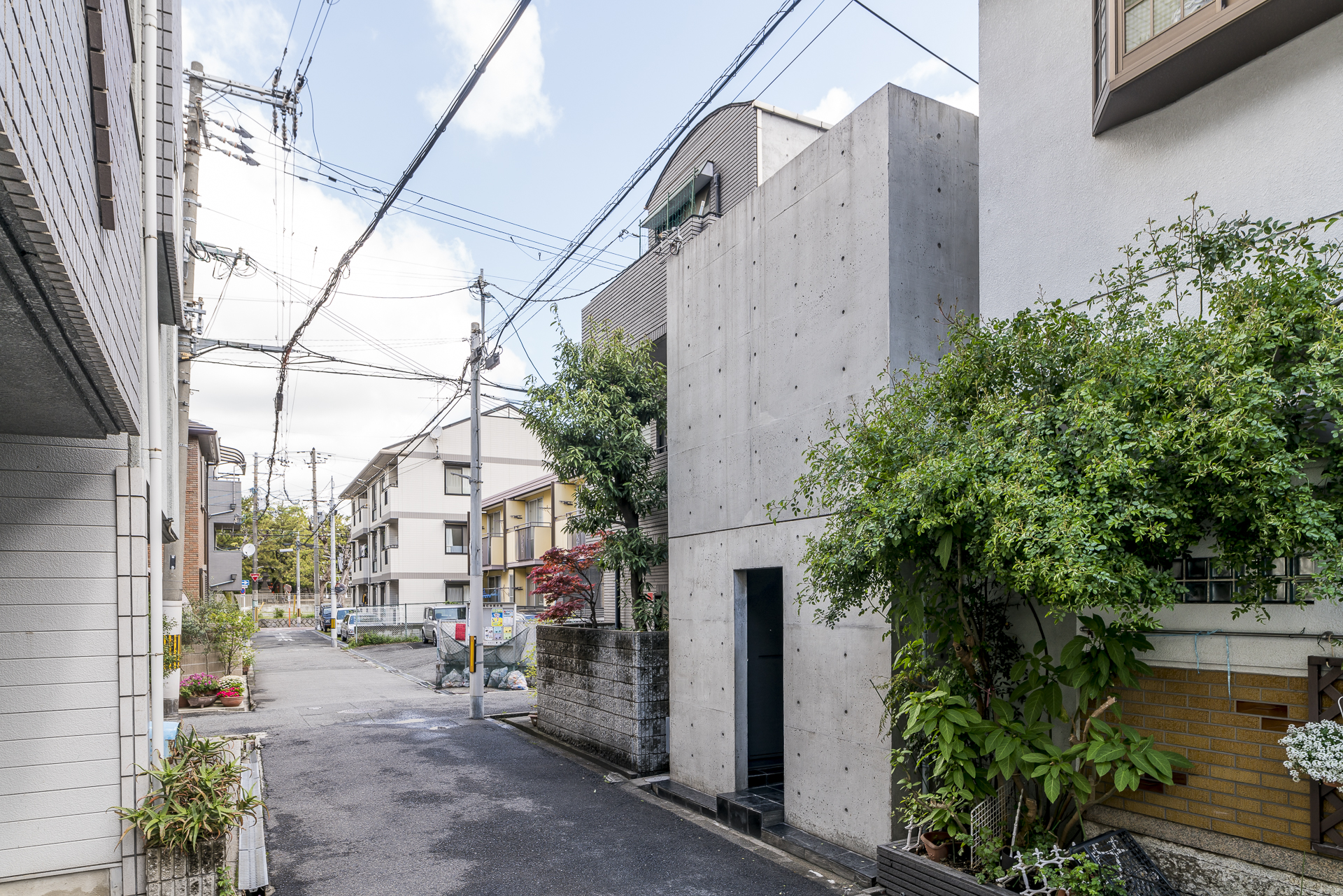
Among the classic sights that we will see during these three days are the Dotonbori district with the postcard backdrop of the bridge of the same name, as well as the Shinsekai, which was built in the pre-war period around 1912. On the way from Dotonbori to Shinsekai, it is also worth stopping at Namba Parks (green shopping complex) and at what is probably the weirdest Shinto shrine in Japan, the Nambayasaka Shrine. If it rains – which it did for us – the feet stay nice and dry in the National Museum of Art.
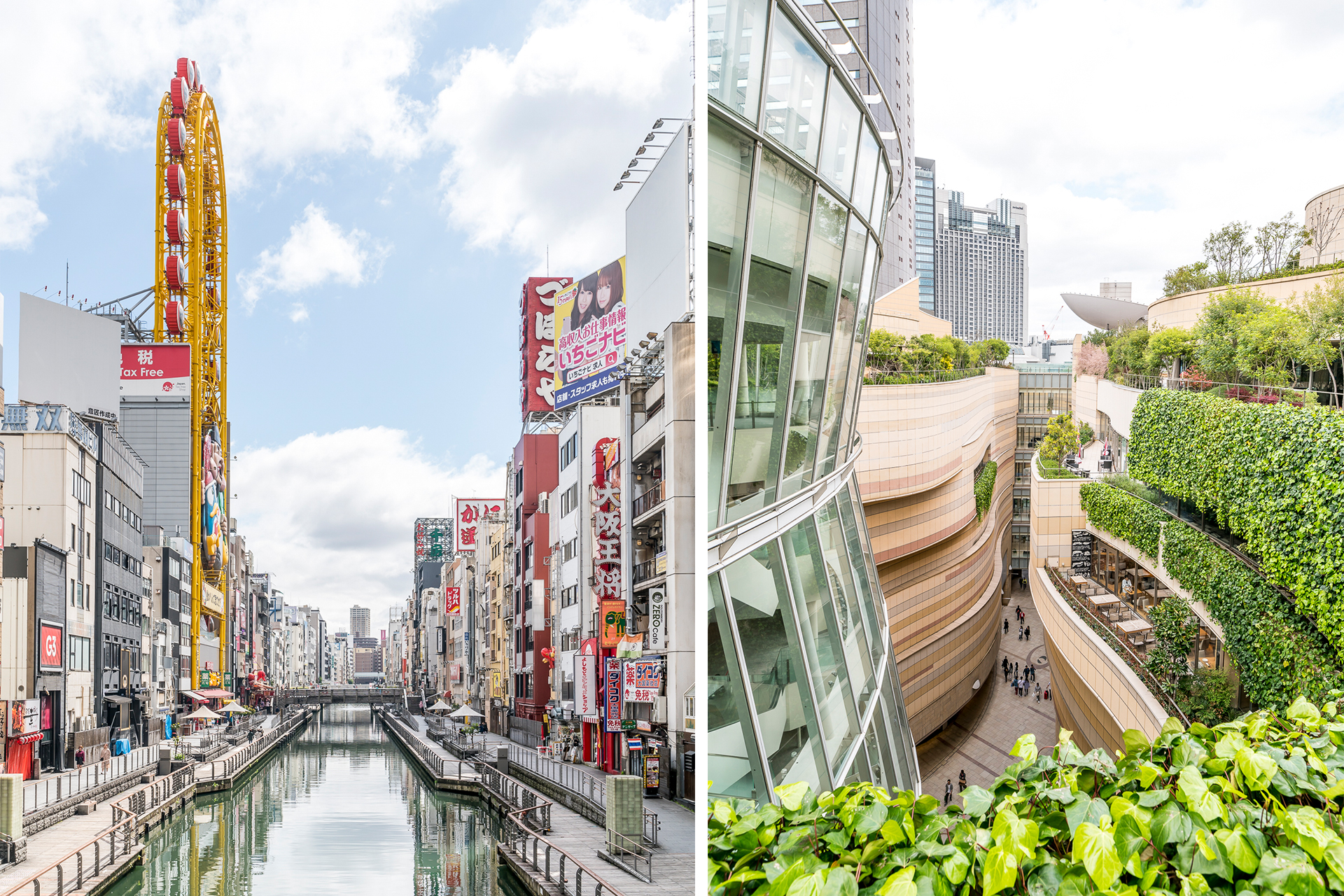
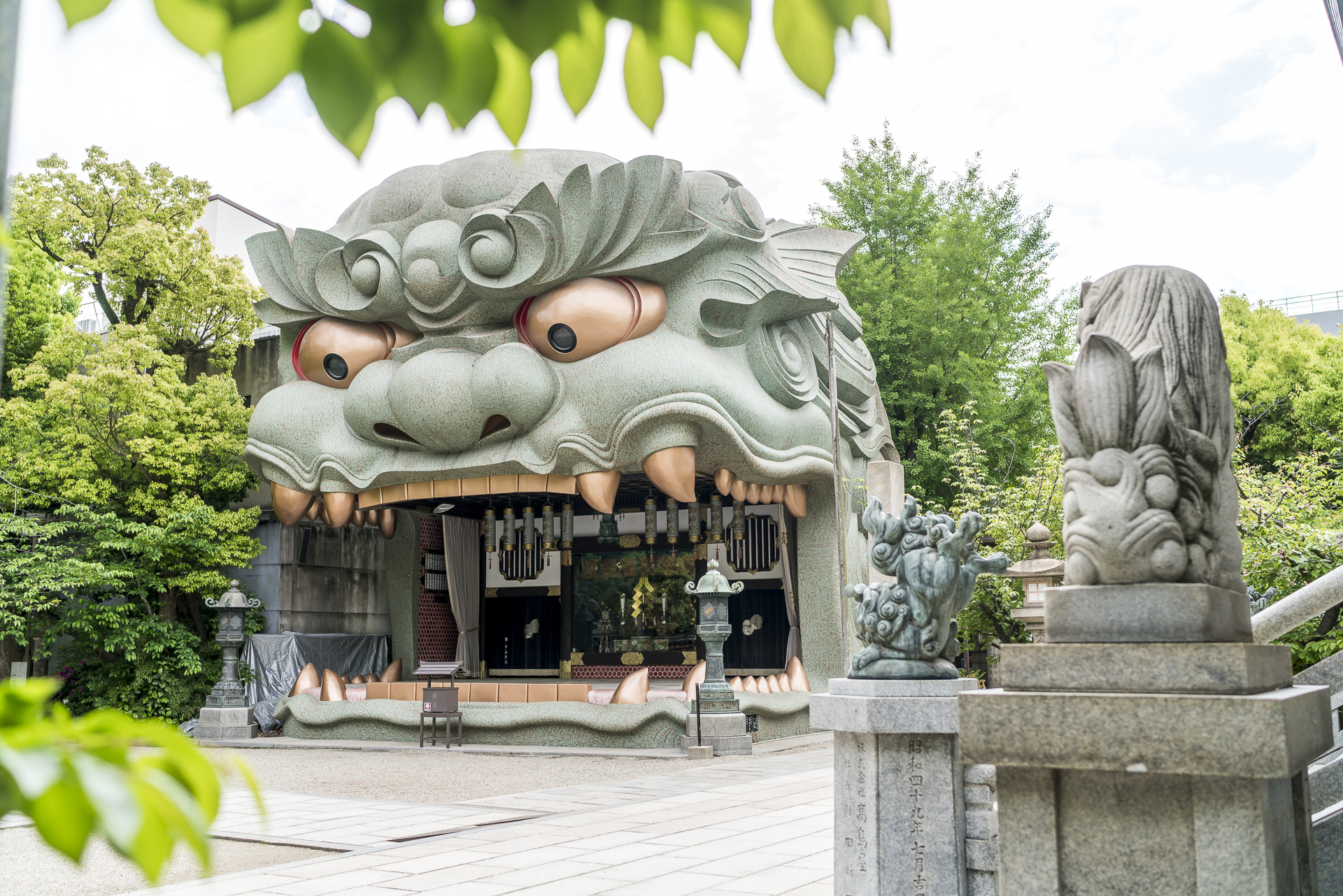
And if we are already in the foodie capital of a country where we always eat well anyway, we naturally test our way through the local specialties. These include okonmiyaki and takoyaki. You will find both specialties in Dotonbori. We liked the okonmiyaki best at Mizuno Okonmiyaki. A special dining experience is offered by the Teppanyaki Restaurant Kamon on the top floor of the Imperial Hotel. We enjoy the magnificent panoramic view as well as the freshly prepared teppanyaki menu in front of us. A meal in the Kamon restaurant costs around 180 CHF for two. If that’s too expensive for you, you can enjoy a gigantic 360° panoramic view of Osaka at the Umeda Sky Building for an entrance fee of 500 yen (around 4.50 CHF). It’s best to head for this viewpoint just before sunset.
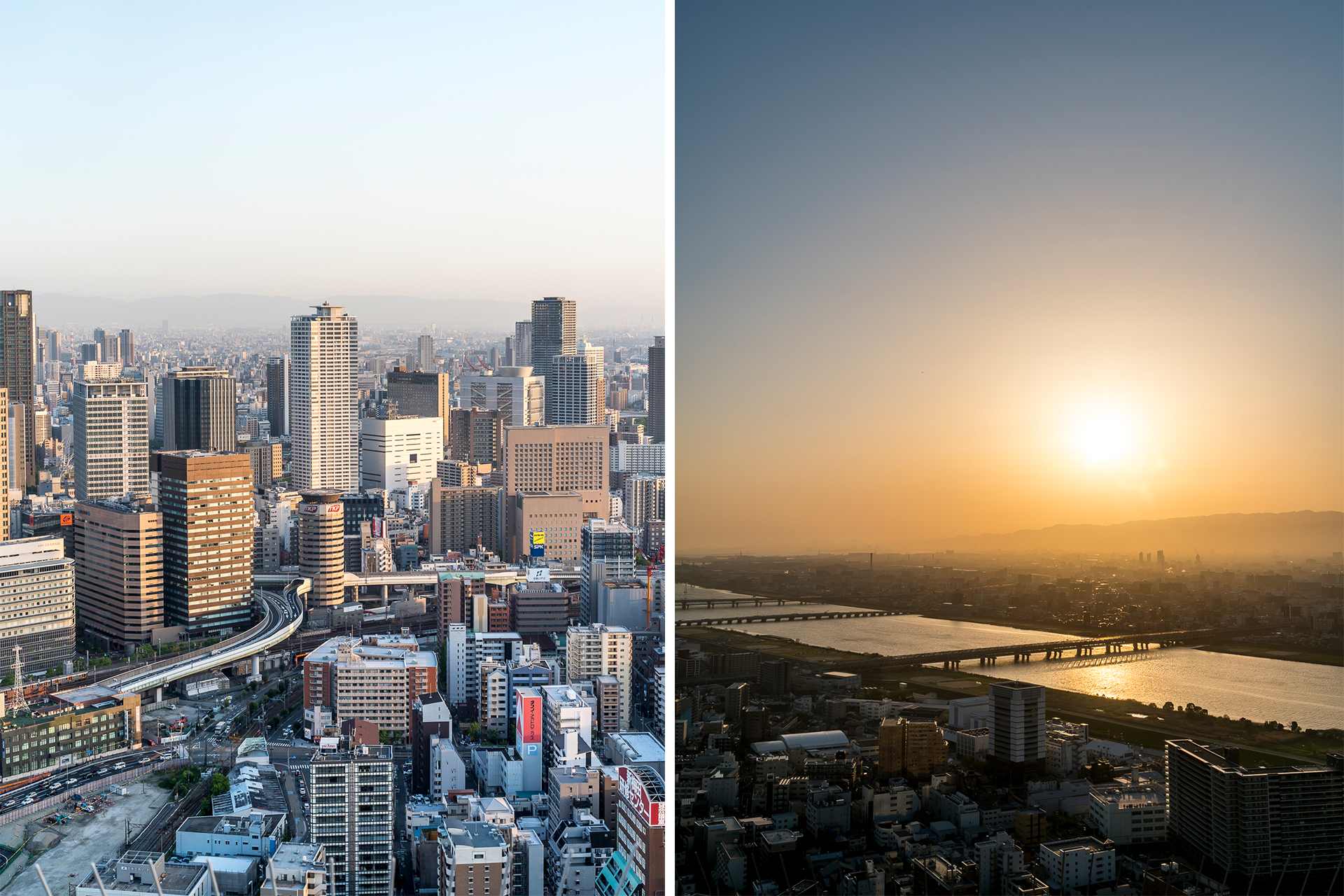
Traveling with: JR Tokaido Sanyo Main Line
Overnight: Hostel Jin
Highlight: View from Umeda Sky Building
Day 23: Two castles in one fell swoop
I have already reported in detail about our highlights between Okayama and Kurashiki on the blog. To get from Osaka to Okayama, there are two alternatives. Either you go from Osaka Station to Shinosaka, where the Shinkansen trains stop, or you can take the JR Tokaido Sanyo Main Line to Himeji and change to the express train there. The time difference is about 10 minutes (total travel time about 1.5 hours). For this stage, I recommend a two- to three-hour stopover in Himeji to visit the castle of the same name. It’s worth it! At the train station you will find lockers where you can also fit a large bag or suitcase. At least we got the huge 110l duffle bag with wheels of the friend in without any problems.
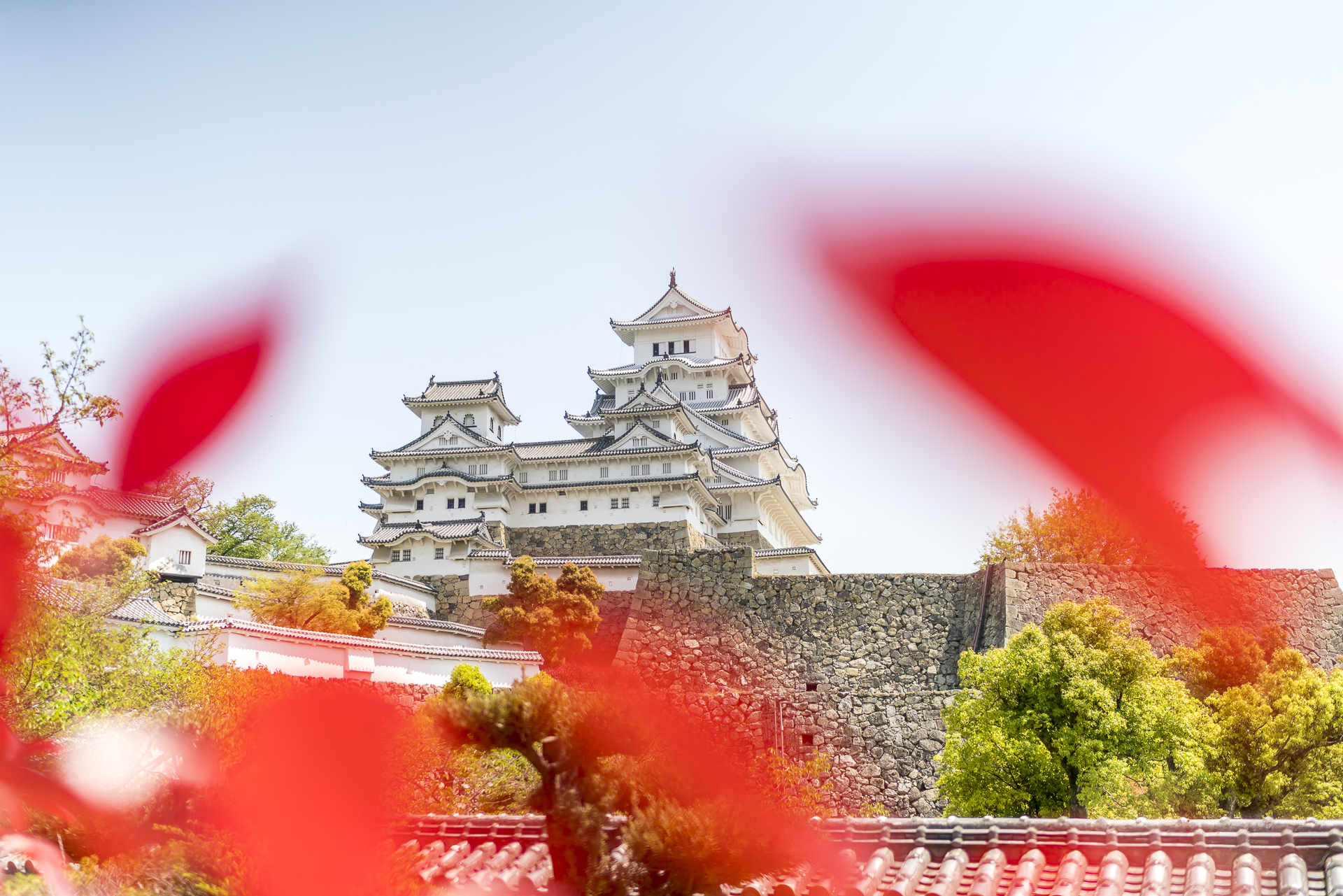
On the road with: Shinkansen
Overnight: Hotel Excel Okayama
Highlight: Koraku-en Garden
Day 24: Art and Beautiful Beaches in Naoshima
The journey takes us from Okayama to the art island of Naoshima. For this we have to go to Uno and change to the ferry there. Depending on the time, there are direct connections from Okayama to Uno, otherwise you will have to change to the JR Uno Line in Chayamachi. In total, the journey takes about two hours (including the ferry).
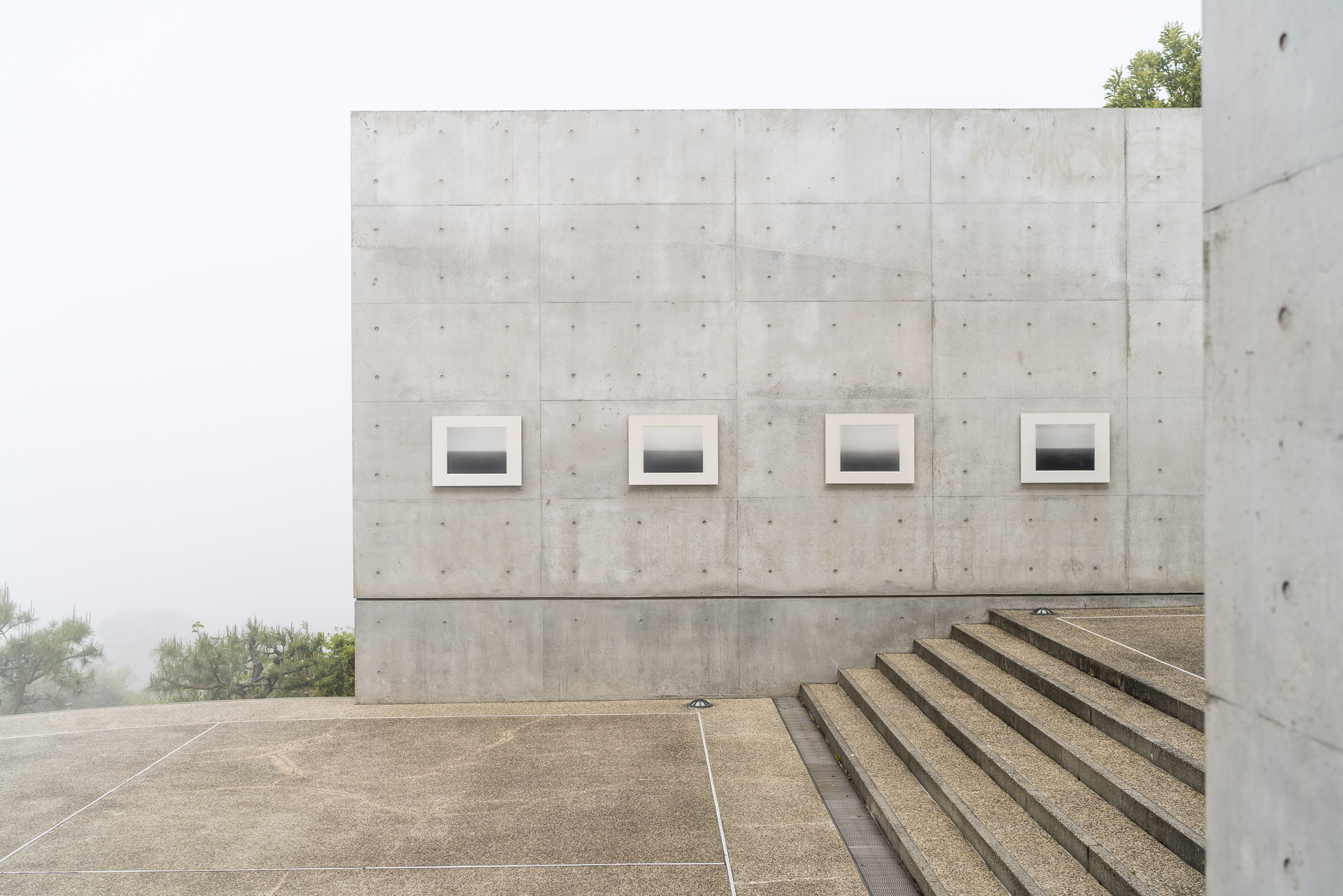
On the road with: JR Line and Ferry
Overnight: Benesse Park House
Highlight: The Fusion of Art & Nature
Day 25: Spend the night in a ryokan
Unfortunately, there are no direct services from Uno to Kurashiki. So we have a reunion with Okayama Station, where we change from the Uno Line to the JR Setoohashi Line. Fortunately, Japanese train stations are sufficiently equipped with escalators and lifts, so that changing trains usually takes place without much effort.
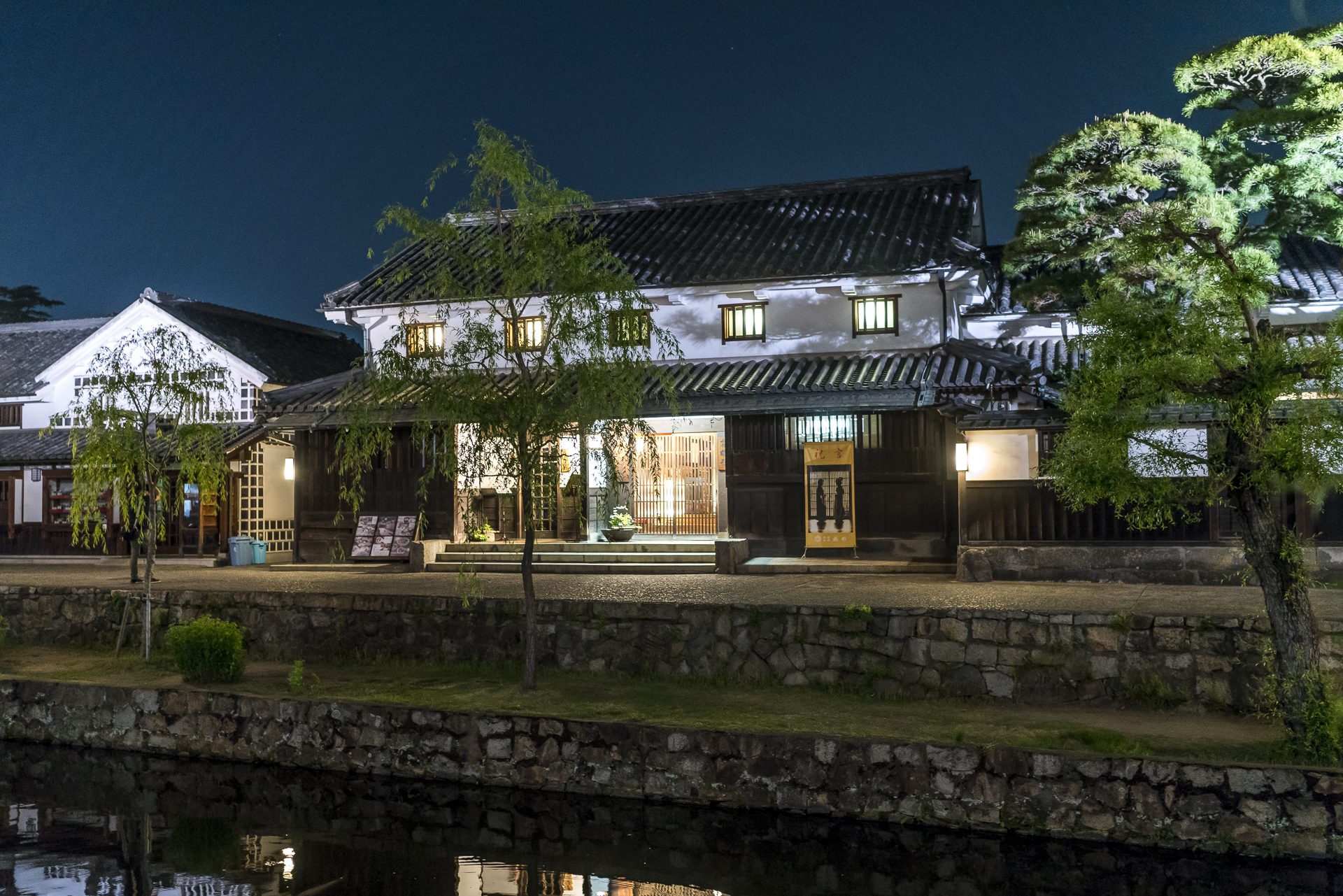
On the road with: JR Line
Overnight: Ryori Ryokan Tsurugata
Highlight: The Authentic Ryokan Experience
Day 26 to 27: Heavy fare in Hiroshima
The quickest way to get from Kurashiki to Hiroshima is via Okayama, where you change to the Sakura express train to Kagoshima. But since we have already made the detour via Okayama once, we decide to take the Kodama express train, which stops at Shinkurashiki Station. Since the weather forecast reports a bad weather front, we use the afternoon for a trip to Miyajima. According to the Confucian scholar Hayashi Razan, the island is one of the three most beautiful landscapes in Japan. A tourist attraction is not only the beauty of the island, but also the imposing wooden torii of Itsukushima Shrine. Unfortunately, the weather changes faster than expected and we forego a gondola ride to the viewpoint on the summit in view of the thick clouds. Instead, we try our hand at various oysters – a local specialty – at the Yakigaki-no-Hayashi restaurant, which taste surprisingly good (I’m not really an oyster fan). The crossing from Miyajimaguchi (San’yo Line) to Miyajima Island is conveniently included in the Japan Rail Pass. There are two ferry operators on site. The JR ferry is on the right (facing Miyajima).
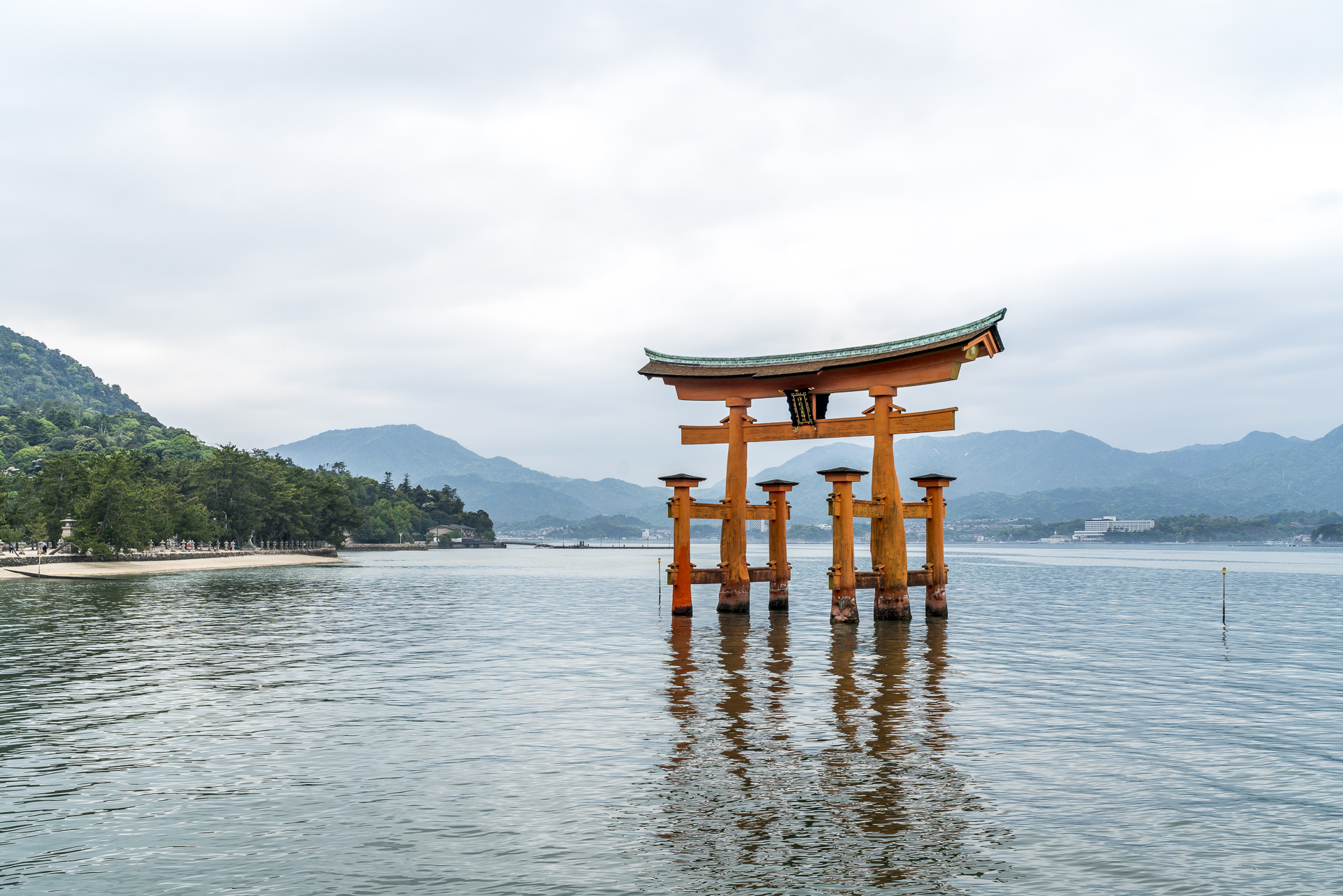
As predicted, it pours down the next day. We first “escape” to the Obscura Coffee Roasters coffee shop, fortify ourselves with a coffee and then head for the Hiroshima Peace Memorial Museum. An impressive exhibition with heavy fare! Actually, I would have liked to explore the Peace Park designed by Kenzo Tange extensively. But due to the persistent rain, we leave it at a short tour.
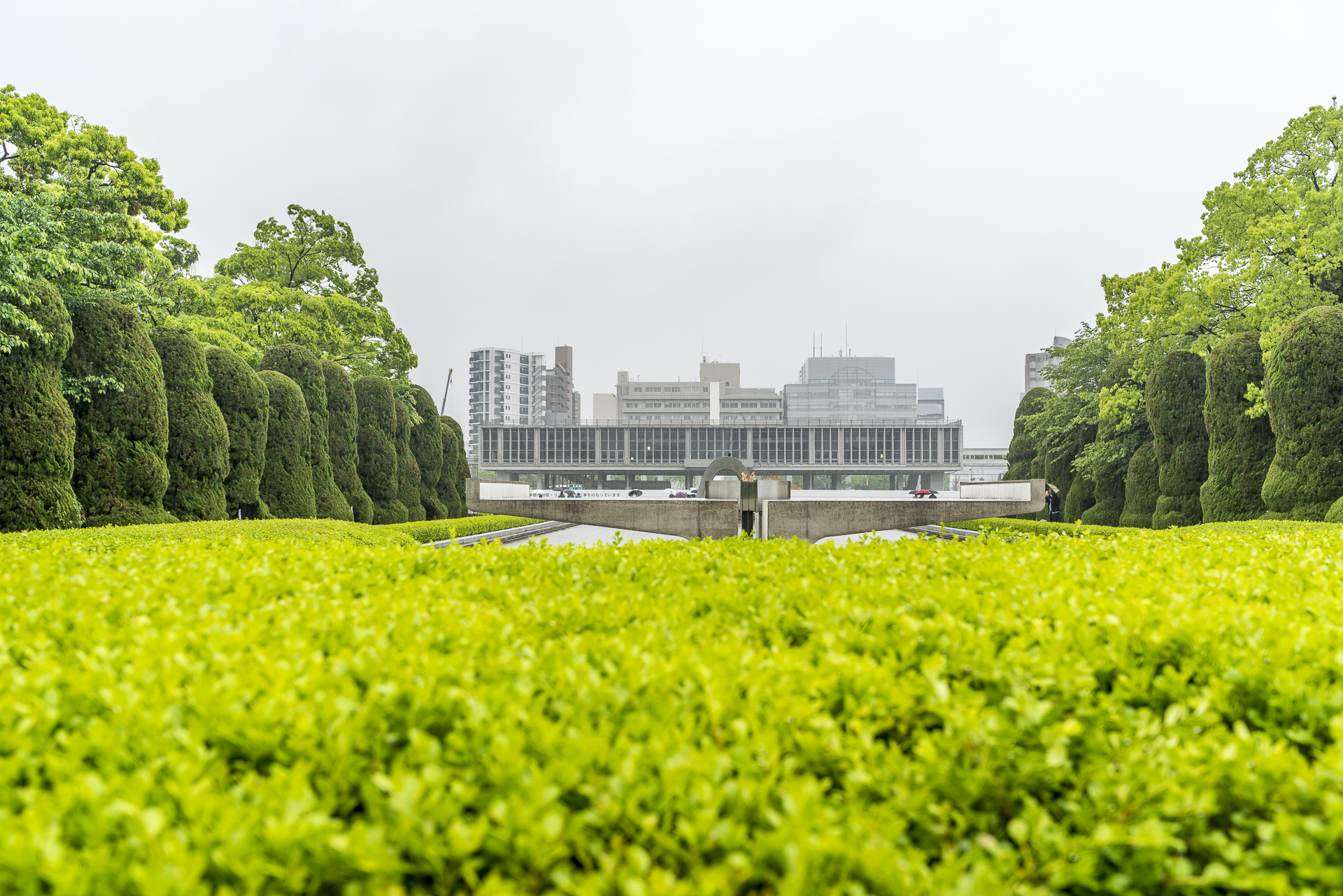
On the road with: Shinkansen, JR Line, Ferry
Overnight: Hotel Granvia Hiroshima Highlight: Fresh oysters on Miyajima
Day 28 to 29: Green at last! Yakushima
With the exception of Kawaguchiko and Takayama, our 30-day trip to Japan has been very city-heavy so far. Unfortunately, I didn’t keep any statistics, but we covered tens of kilometers on asphalt roads. The two days on Yakushima were a welcome change. You won’t find Yakushima on any classic itinerary and is one of the insider tips for me. You can find the detailed report on this stage of the journey here: Yakushima Travel Guide
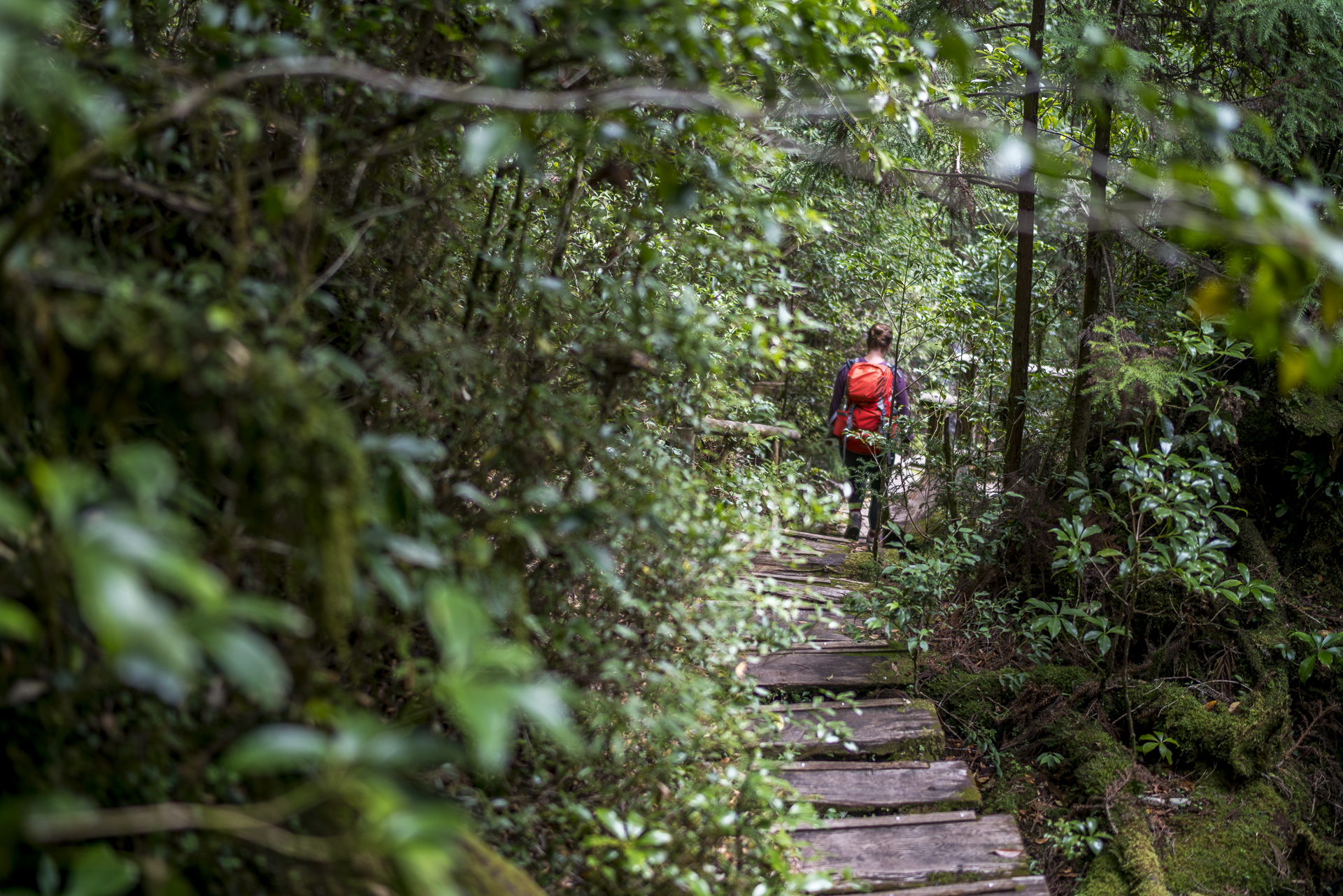
On the road with: Shinkansen, ferry, car
Overnight: Pension Blue Drop
Highlight: Dinner at Okas Restaurant
Day 30: End in Kagoshima
From Kagoshima we didn’t see much more than the harbor, the main road from the train station to the harbor, a Laundromat and MOS burger. We have our hangman’s meal after arriving late in the Japanese counterpart to McDonalds, where the chili burger at MOS tastes really delicious. The next day, we take the bus, which stops right in front of our hotel, to Kagoshima Airport and from there take China Eastern to Shanghai.
On the road with: Toppyferry
Overnight: Remm Kagoshima
Highlight: Chiliburger at MOS
Practical tips for your trip to Japan
Zugfahren |
- The Japan Rail Pass is available for 7, 14 and 21 days and can be purchased through authorized points of sale (travel agencies) abroad. Since last year, it has been possible to buy the Japan Rail Pass directly in Japan, although this is around 10% more expensive.
- I recommend downloading the Japan Official Travel App for route planning. The app not only shows you the appropriate train connections, but also shows you where the Japan Rail Pass is valid everywhere.
- For the high-speed train connections (Shinkansen), we made seat reservations at a JR Ticket Office about one day in advance (usually on arrival at the station). With the Japan Rail Pass, you don’t pay extra for seat reservations.
- If you travel with large luggage (like us), you will find a suitable storage area in the Shinkansen at the end of the carriage behind the last seat (the shelves above the seats are relatively narrow).
- The Japan Rail Pass is not valid for urban transport (metro/buses). The best way to do this is to buy a so-called IC card (Suica or Pasmo). You can find more details on how to use the IC-Card in my Tokyo travel guide.
Driving |
- With a Swiss driver’s license, you need a Japanese translation for Japan. This can be organised either from Switzerland via an agency or directly in Japan at a JAF (Japan Automobile Federation) office. Usually, this is done within a day and costs 3,000 yen. The JAF has explained the process here and you can find information about it in my Yakushima blog post, where I go into more detail about driving in Japan.
Accommodations |
- First and foremost, we have made sure that the accommodations are located close to the respective train stations in order to minimize luggage lugging.
- We have stayed in hostels as well as in classic business hotels. As a rule, the rooms are small but functionally furnished by international standards.
- Average business hotels (3 to 4 star category) are relatively cheap in Japan. We paid between 60 and 80 CHF for an overnight stay in a double room in several hotels, which I think is inexpensive.
- Overnight stays in traditional guesthouses (ryokans) are more expensive, although these usually include full board.
- I booked most of the accommodations via Booking or Agoda. In contrast to Agoda, Booking sometimes lacked information on the individual room categories – or Agoda offered the possibility to book different categories.
- If you are looking for special ryokans (traditional Japanese inns), you will find what you are looking for on the Japanese Guest Houses page. Attention – you can’t book there directly, but you have to send an inquiry first.
- If you travel during the high season (cherry blossom / autumn coloring), I recommend booking the accommodations early.
Costs & Prices |
- Cost Japan Rail Pass: 1080 CHF (Two passes for 21 days each)
- Other transport costs (metro / ferry / car): 900 CHF
- Accommodation: 3,170 CHF (mostly in double rooms without breakfast)
- Food/catering: 4’900 CHF
- Entrance fees for attractions: 450 CHF
The 30 days cost us around 10,500 CHF. There is significant potential for savings when it comes to food – we tried some expensive restaurants (including some that have been awarded Michelin stars) and I think it was worth it. But of course, you can also spend significantly less money and still eat fine.
With the exception of the four nights in Kyoto, we stayed in double rooms with private bathrooms. The average price per night is 106 CHF, with the two nights in Kawaguchiko and the overnight stays on Naoshima and Kurashiki accounting for two-thirds of the accommodation cost.
Route overview of our trip to Japan (29.3.2018 – 28.4.2018)
The most important questions for your trip to Japan:
Our 30-day trip to Japan cost us around 10,500 CHF without the flights for two. We spent an average of 106 CHF per night on overnight stays.
It’s a great destination all year round. We decided to go to March and April to see the cherry blossoms. Another great time to travel Japan is the months of October and November due to the fantastic fall foliage colors.
We took 30 days and didn’t see everything. Ideally, you should allow at least two weeks for arrival and departure.
The cherry blossom season in Japan begins in the south towards the end of March and then migrates north to Hokkaido until the end of April.


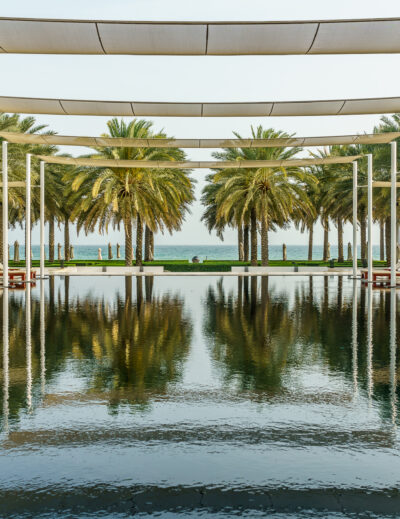

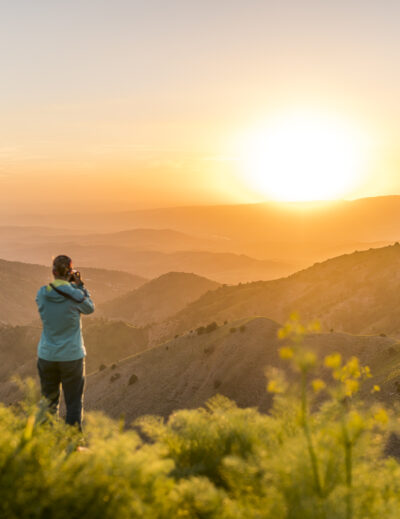
Leave a Reply